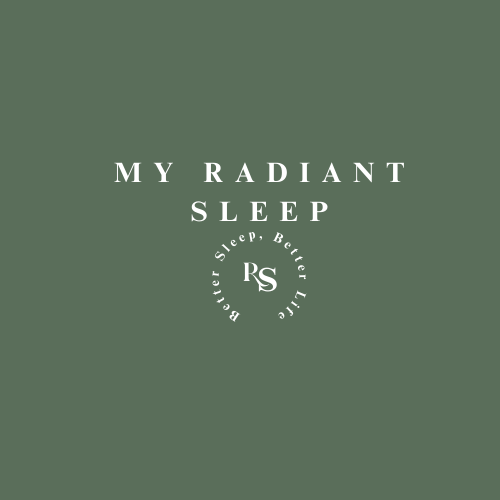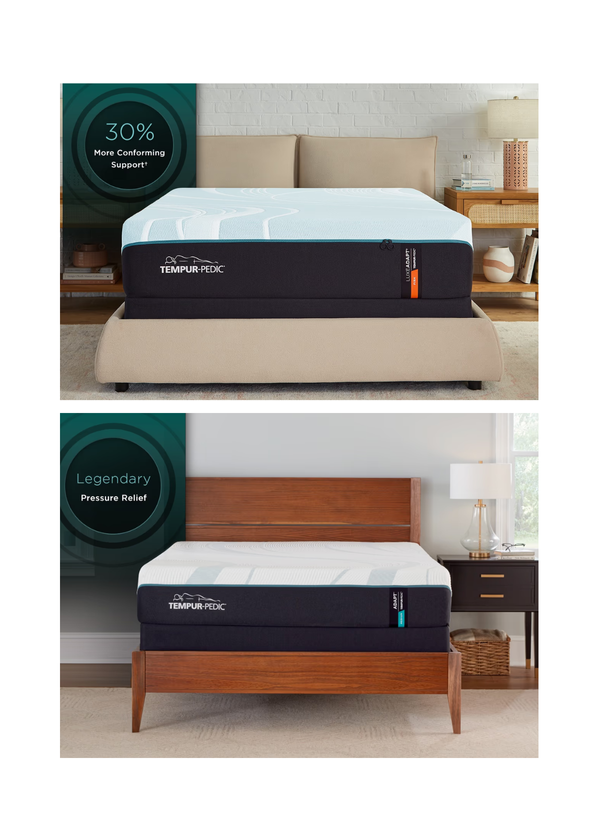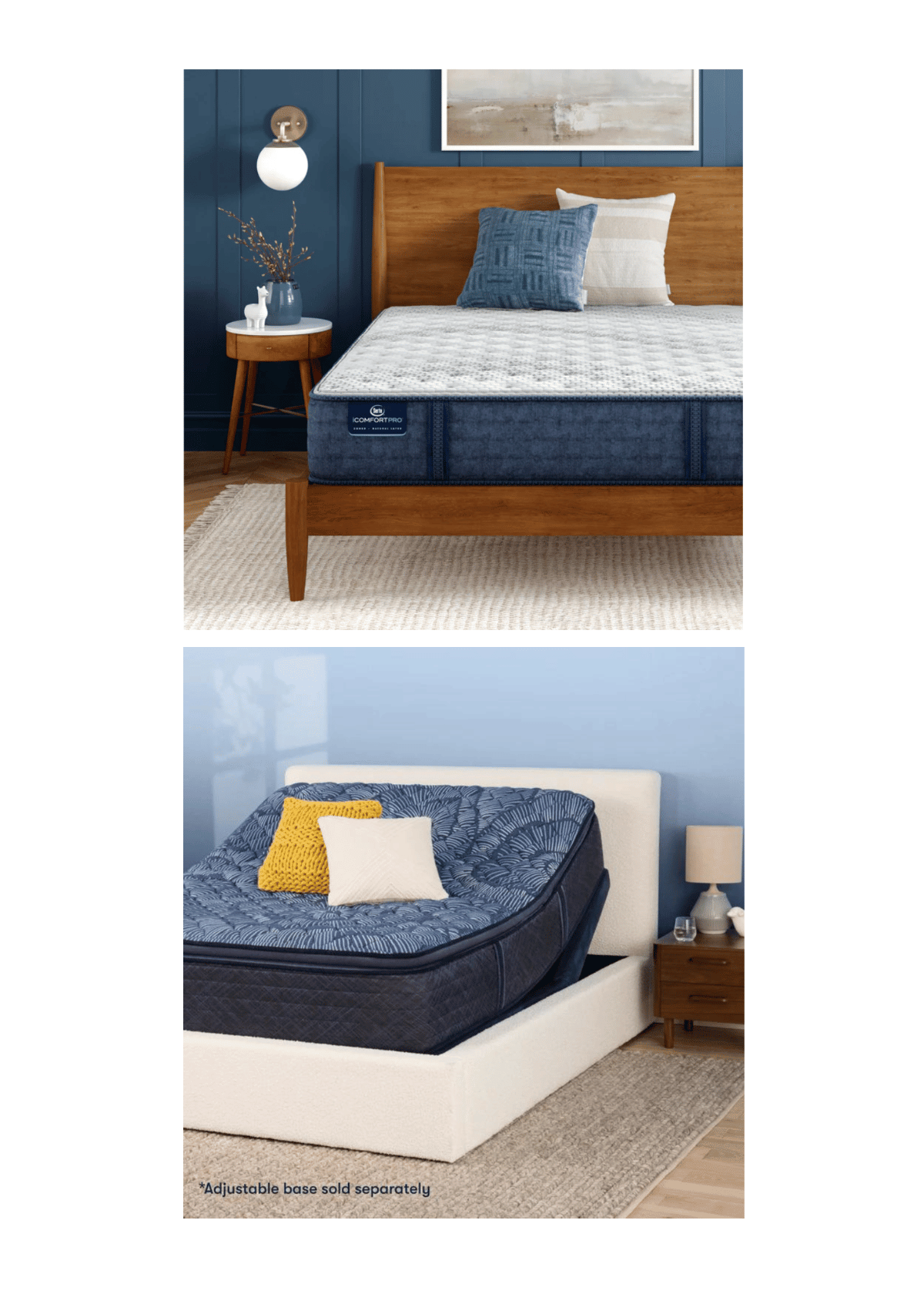Have you ever wondered what makes a latex mattress stand out from other options?
Latex is an excellent choice if you’re looking for a sleep surface that’s naturally breathable, supportive, and eco-friendly.
These mattresses provide pressure relief, durability, and a healthier sleep environment without harmful chemicals.
Whether you prefer the firm support of Dunlop latex or the plush responsiveness of Talalay, this guide will help you find the best latex mattress for your needs.
Let’s explore the top picks for natural comfort and restorative sleep.
Best Overall:
WinkBeds EcoCloud Hybrid Mattress
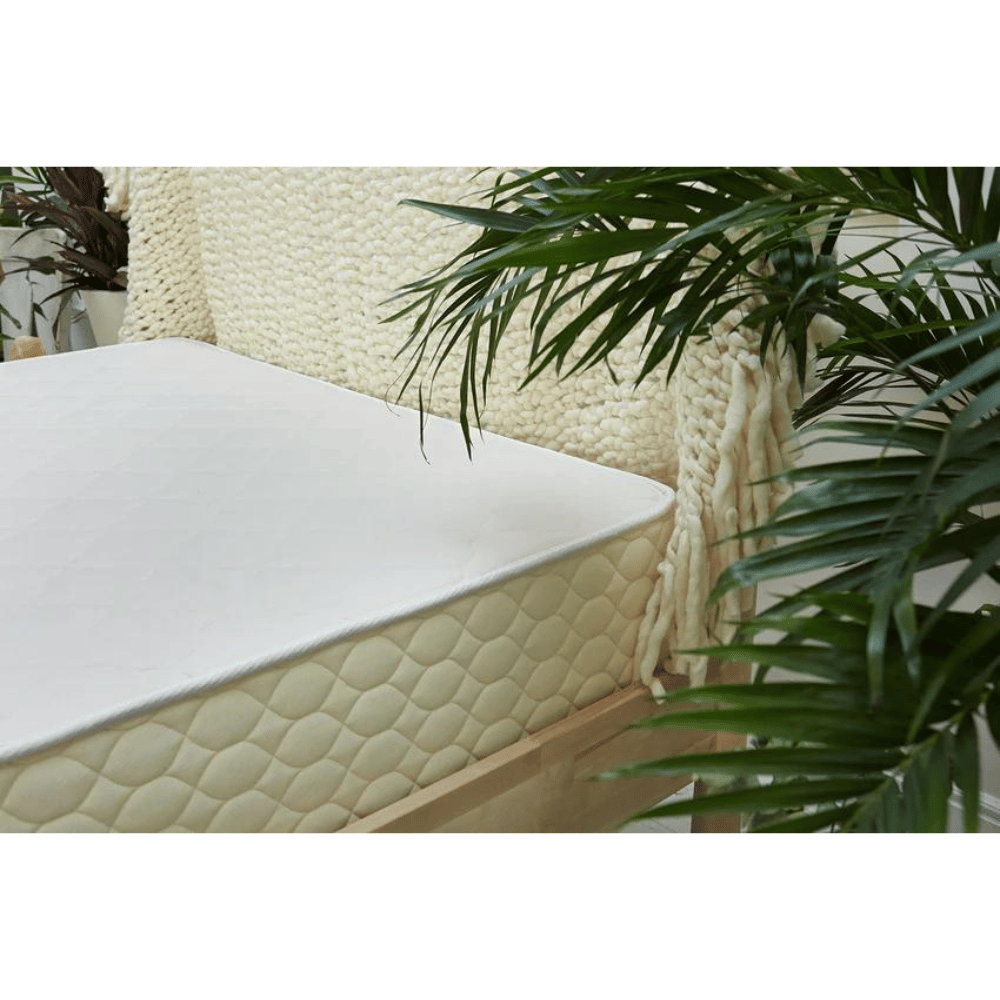
Price Range: $1,799–$2,199 (With discount)
Rating: 4.6/5
Best for Combination and Side Sleepers
The responsive Talalay latex cushions pressure points for side sleepers, while the zoned coil system supports back and stomach sleepers. Its balanced feel and adaptive design make it a great choice for combination sleepers who shift positions frequently, ensuring continuous support and comfort throughout the night.
Notable Features & Perks
- Materials and Construction
- Crafted with natural Talalay latex for responsiveness and breathability.
- Global Organic Textile Standard (GOTS)-certified organic cotton cover for softness and moisture-wicking.
- The New Zealand wool layer enhances temperature regulation and adds comfort.
- A zoned pocketed coil system offers targeted support and motion isolation.
- Firmness and Feel
- Medium firmness (6.5/10) provides a balance of cushioning and support.
- Responsive latex creates a buoyant feel without excessive sinkage.
- Ideal for sleepers who prefer plush comfort and firm support.
- Pressure Relief
- Talalay latex evenly distributes weight.
- Zoned coils provide enhanced support in areas like the lower back.
- Ideal for reducing tension in the shoulders, hips, and spine.
- Temperature Regulation
- Breathable organic cotton and wool help wick away moisture.
- Open-cell latex structure enhances airflow and prevents heat buildup.
- The coil system promotes ventilation, making it a great choice for hot sleepers.

Pros and Cons
Pros
- Excellent Temperature Control: Natural materials keep sleepers cool all night.
- Great for Pressure Relief: Talalay latex and zoned coils offer superior comfort.
- Eco-Friendly and Sustainable: Made with organic and responsibly sourced materials.
Con
- Not Ideal for Extra-Firm Support: May not be suitable for sleepers who prefer a very firm mattress.

In-Depth Review: Comfort, Support, and Durability
- Edge Support
- Reinforced perimeter prevents sagging and increases usable sleep space.
- Sturdy edges provide stability for sitting or getting out of bed.
- Ideal for couples or those who need consistent edge support.
- Motion Isolation
- Individually wrapped coils minimize motion transfer.
- Latex absorbs movement better than traditional foam.
- Suitable for couples and light sleepers who are easily disturbed.
- Certifications and Eco-Friendliness
- GOTS-certified organic cotton and GOTS-certified organic woolensure responsible sourcing.
- Talalay latex is sustainably harvested and free from synthetic chemicals.
- GREENGUARD Gold certified for low emissions and eco-friendly production.

Shipping and Returns
WinkBeds offers free shipping within the contiguous U.S. and a hassle-free return process. Customers can return the mattress during the trial period for a full refund if unsatisfied.
Trial Period and Warranty
The WinkBeds EcoCloud Hybrid Mattress has a 120-night sleep trial and a lifetime warranty, reflecting the brand’s commitment to quality and durability.
My Verdict
The WinkBeds EcoCloud Mattress is a fantastic option for eco-conscious sleepers seeking comfort, support, and sustainability.
It may not suit those who prefer an ultra-firm feel: but it's responsive latex, zoned coils, and breathable materials: an excellent investment for long-term sleep quality.

Most Luxurious :
Saatva Zenhaven Mattress
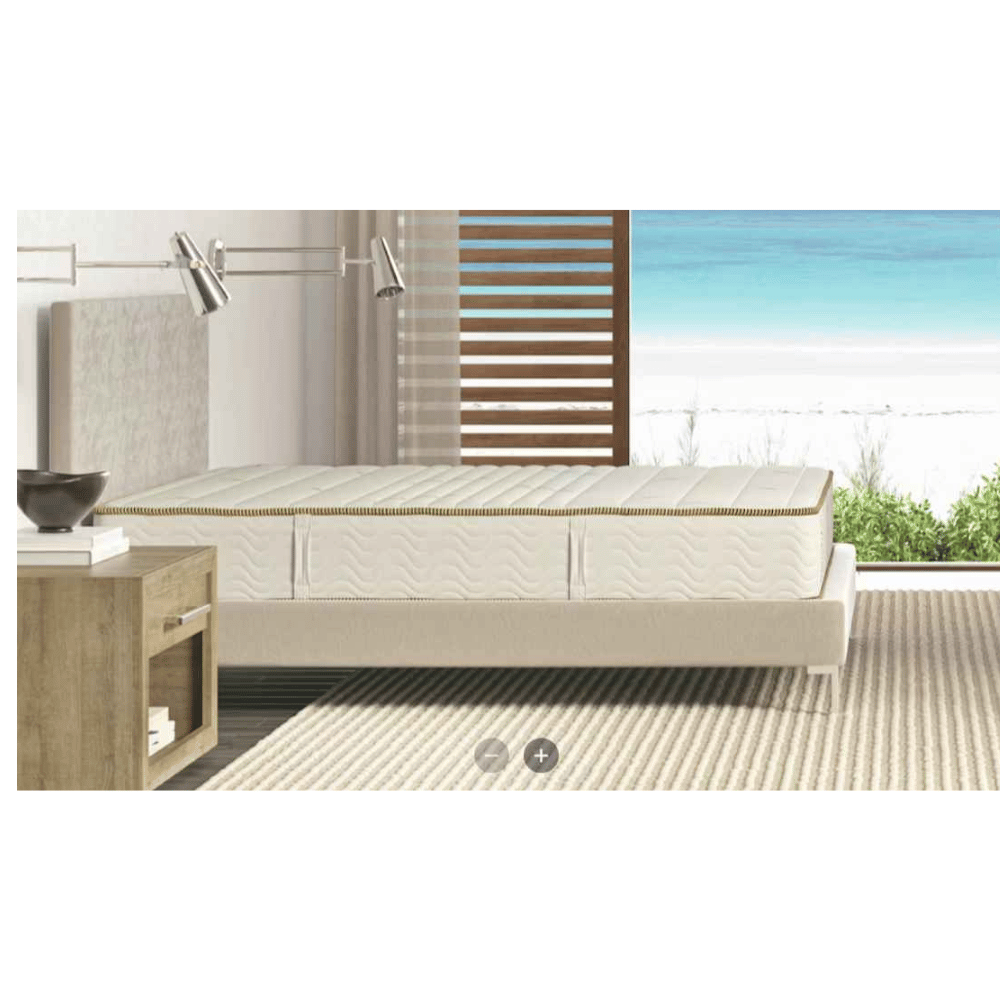
Price Range: $1799 – $4,295
Rating: 4.8/5 stars
Best for Side Sleepers – Zenhaven’s Talalay latex offers plush contouring for the shoulders and hips, reducing pressure points. Also Great for Back Sleepers – Its firm support keeps the spine aligned, promoting comfort for back sleepers.
Features & Benefits
Dual-Sided Firmness for Custom Comfort
- The Zenhaven features flippable firmness, with a Luxury Plush side (4-5/10) and a Gentle Firm side (7-8/10) for personalized support.
- It is ideal for sleepers who want adjustable firmness without needing a mattress topper.
All-Natural, Hypoallergenic Latex Construction
- Made from 100% Talalay latex, the mattress is naturally resistant to dust mites, mold, and allergens.
- Free from synthetic foams, toxins, or harmful chemicals, ensuring a healthier sleep environment.
Zoned Support for Pressure Relief & Spine Alignment
- Five-zone Talalay latex layers provide targeted support for the lumbar region while cushioning pressure points.
- Maintains proper spinal alignment, reducing back pain and stiffness.
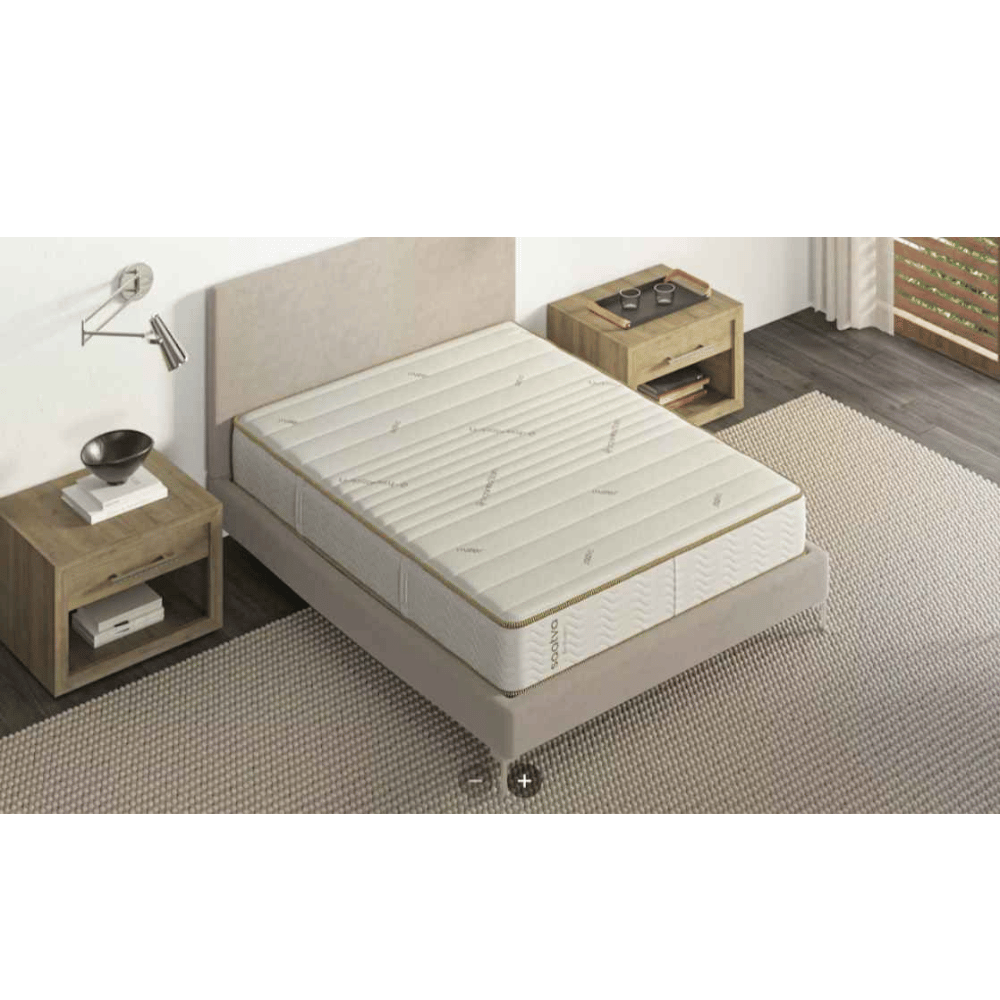
Pros and Cons:
✅ Dual-Sided Firmness for Versatility
✅ 100% Natural and Hypoallergenic Materials
✅ Excellent Pressure Relief and Spinal Alignment
❌ Con:
Expensive Compared to Foam Alternatives
Cooling & Breathability for Hot Sleepers
The Saatva Zenhaven mattress is made with open-cell Talalay latex, which promotes superior airflow and prevents heat buildup throughout the night. Unlike traditional foam mattresses, which tend to trap heat, the breathable latex structure ensures a cool sleeping surface.
The organic cotton cover and natural wool layer work together to wick away moisture, helping maintain a comfortable sleep temperature. These materials naturally regulate body heat, ensuring a dry, breathable sleep environment without synthetic cooling gels or phase-change materials. This makes the Zenhaven a top choice for hot sleepers seeking a naturally cool mattress.
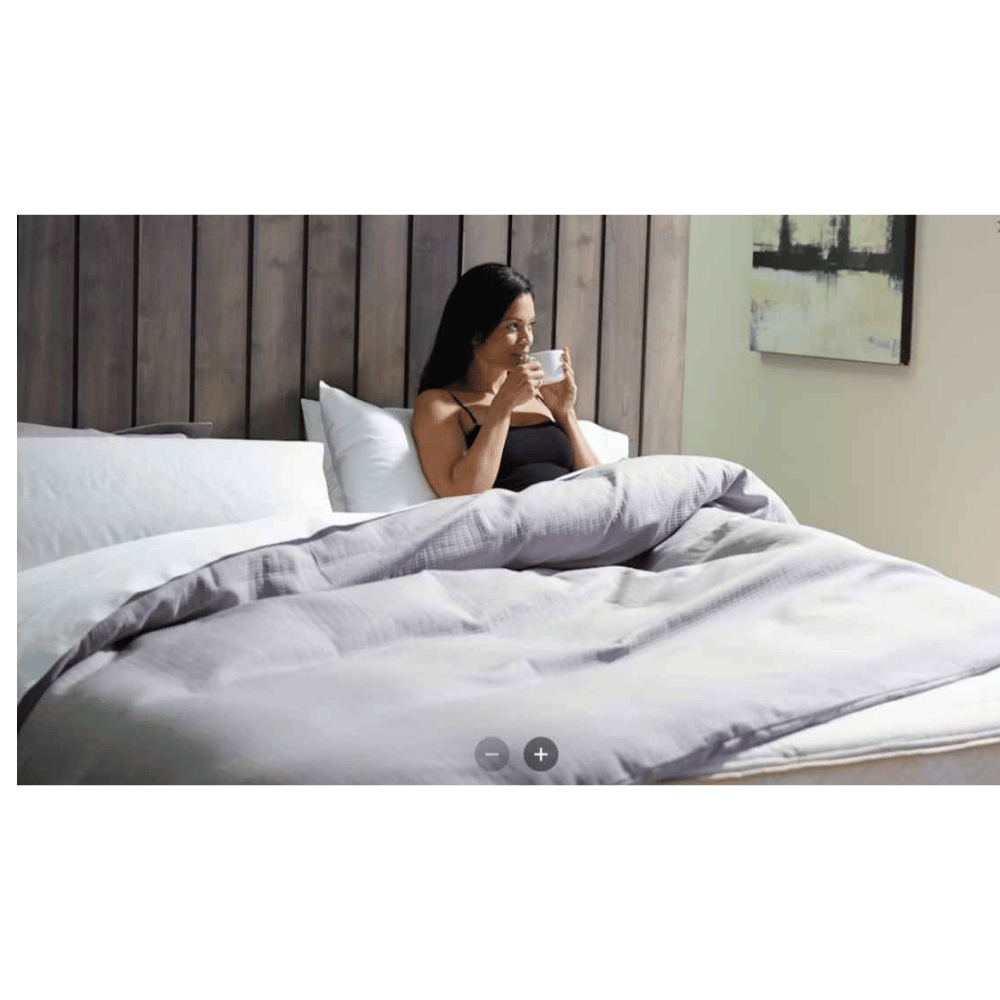
High Durability & Long-Lasting Comfort
Crafted from 100% Talalay latex, the Zenhaven mattress is far more resilient than traditional memory foam or synthetic materials. Unlike foam mattresses that can develop deep body impressions over time,
Talalay latex retains its shape and responsiveness, ensuring long-lasting support and consistent comfort. This durability makes it a wise investment for those looking for a mattress that won’t sag prematurely.
. The premium craftsmanship, combined with natural, high-quality materials, ensures that sleepers can enjoy a comfortable, supportive mattress for years without worrying about wear and tear. With its eco-friendly construction and long-lasting resilience, the Zenhaven stands out as a luxury latex mattress built to last.
Warranty, Trial Period, Shipping, and Returns
- 120-night sleep trial with free white-glove delivery and old mattress removal.
- The 20-year warranty ensures long-term durability and customer satisfaction.
- Hassle-free returns with a full refund (minus a $99 transportation fee).
My Verdict
The Saatva Zenhaven is a luxury natural latex mattress with dual-sided firmness, excellent cooling, and hypoallergenic materials. Its zoned support system is perfect for side and back sleepers, ensuring comfort and spinal alignment. If you want an eco-friendly, durable, and pressure-relieving mattress, the Zenhaven is an excellent choice.

Best Budget-Friendly:
Latex for Less Natural Latex Mattress
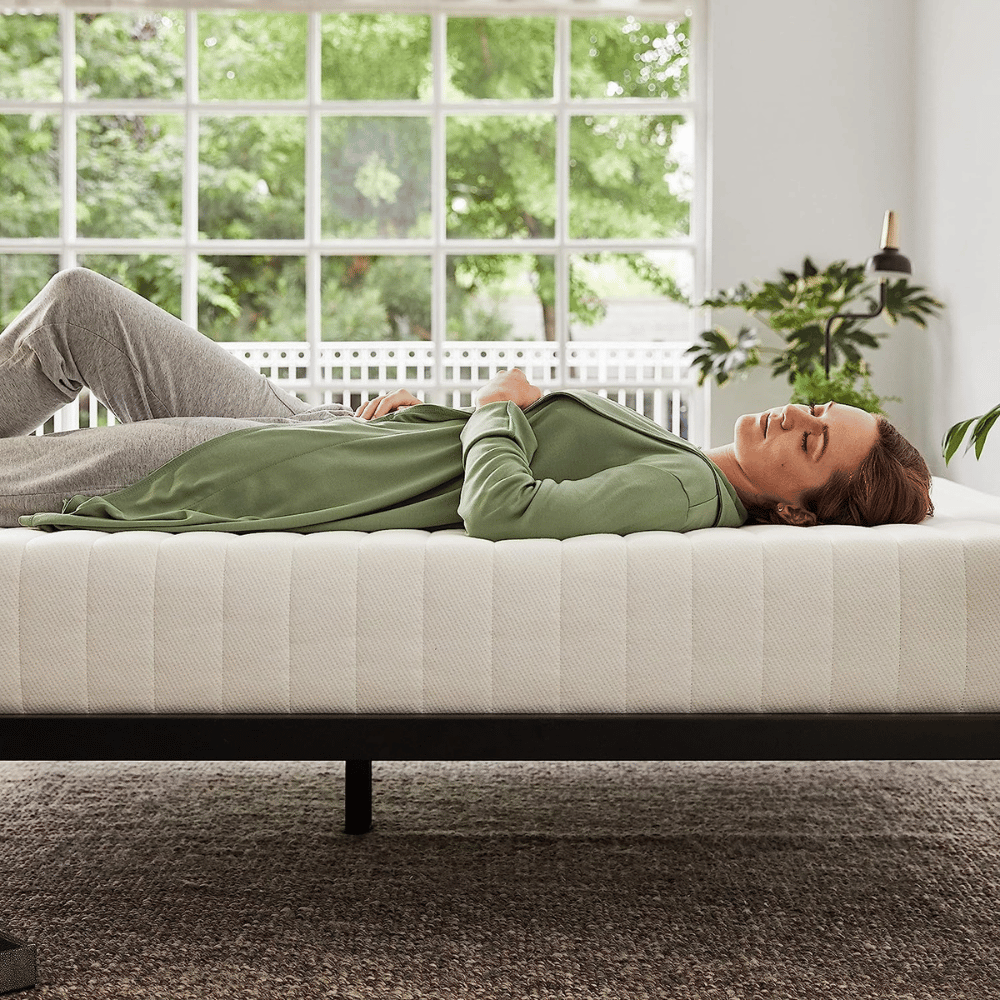
Price Range: $724.00 - $1,694.00
Rating: 4.00/5.00
Best for Back and Side Sleepers
With its dual-sided firmness, this mattress provides a medium side for side sleepers needing pressure relief and a firm side for back sleepers requiring structured support. Stomach sleepers may prefer the firmer side for optimal spinal alignment and weight distribution.
Performance & Support Features
- Materials and Construction
- Made with 100% GOLS-certified organic Dunlop latex for resilience and durability.
- The GOTS-certified organic cotton cover enhances breathability and comfort.
- Organic wool layer naturally regulates temperature and wicks away moisture.
- Dual-sided construction with medium (5.5/10) and firm (7.5/10) firmness levels for customizable comfort.
- Firmness and Feel
- The medium side offers gentle contouring for pressure relief.
- The firm side provides enhanced lumbar support for back sleepers.
- Latex delivers a buoyant, responsive feel without excessive sinkage.

- Pressure Relief
- Adaptive latex conforms to the body, reducing pressure on the hips, shoulders, and lower back.
- Zoned support ensures even weight distribution.
- Ideal for sleepers with joint pain or those needing enhanced spinal support.
- Temperature Regulation
- Breathable organic cotton and wool wick away moisture and prevent overheating.
- Open-cell latex promotes airflow, maintaining a cool sleep surface.
- No synthetic foams that trap heat, making it ideal for hot sleepers
Pros and Cons
Pros
- Dual-Sided Firmness: Allows sleepers to choose between medium and firm comfort.
- 100% Natural and Organic: Free from synthetic foams and harmful chemicals.
- Excellent Pressure Relief and Support: Latex conforms to the body while maintaining proper spinal alignment.
Con
- Limited Edge Support: May experience slight sagging when sitting or sleeping near the perimeter.
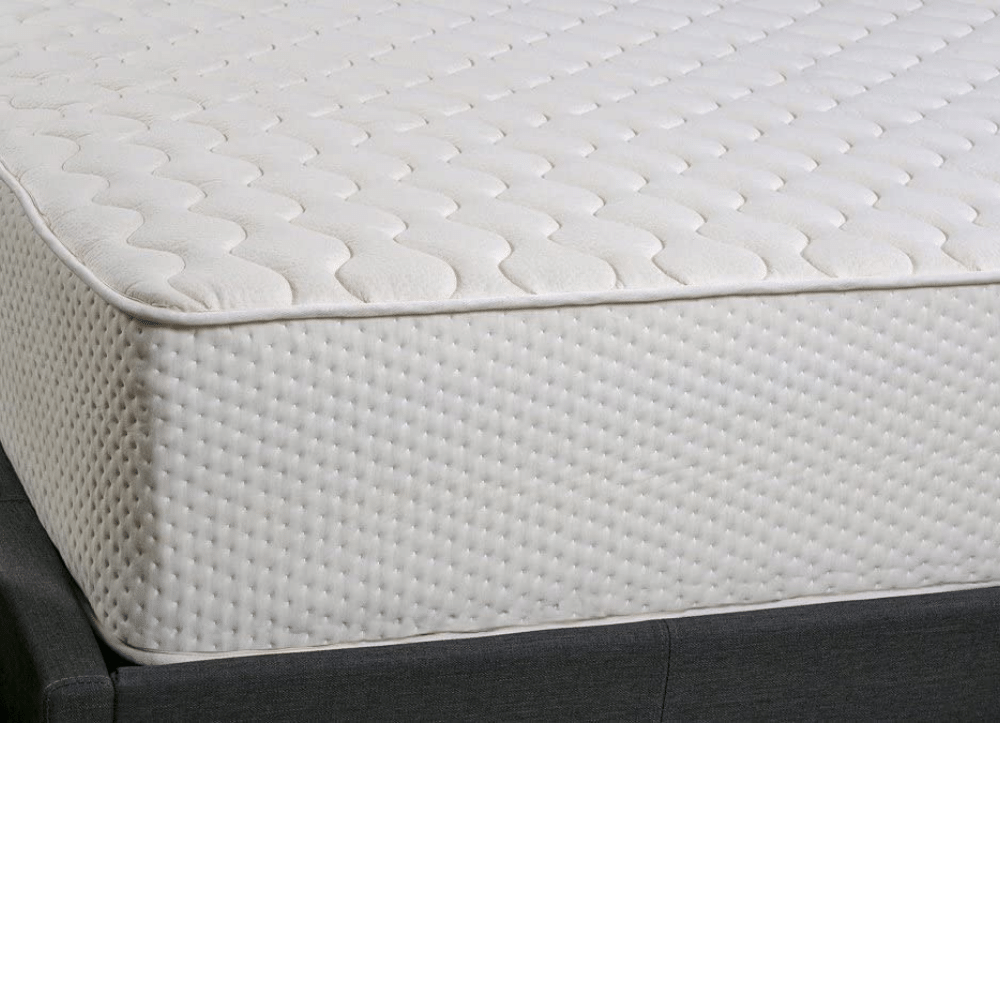
Comprehensive Report: Feel, Stability, and Motion Isolation
- Edge Support
- Latex construction provides some edge stability but is less strong than hybrid models.
- Slight compression may be noticeable when sitting on the edge.
- Best suited for sleepers who do not rely heavily on edge support.
- Motion Isolation
- Dunlop latex absorbs movement efficiently, reducing partner disturbances.
- Natural responsiveness prevents deep sinkage while still isolating motion.
- Great for couples or light sleepers who need a stable sleep surface.
- Certifications and Eco-Friendliness
- GOTS-certified organic cotton and wool ensure sustainable and ethical production.
- GOLS-certified natural latex guarantees eco-friendly and non-toxic materials.
- GREENGUARD Gold certified for low emissions, promoting healthier indoor air quality.
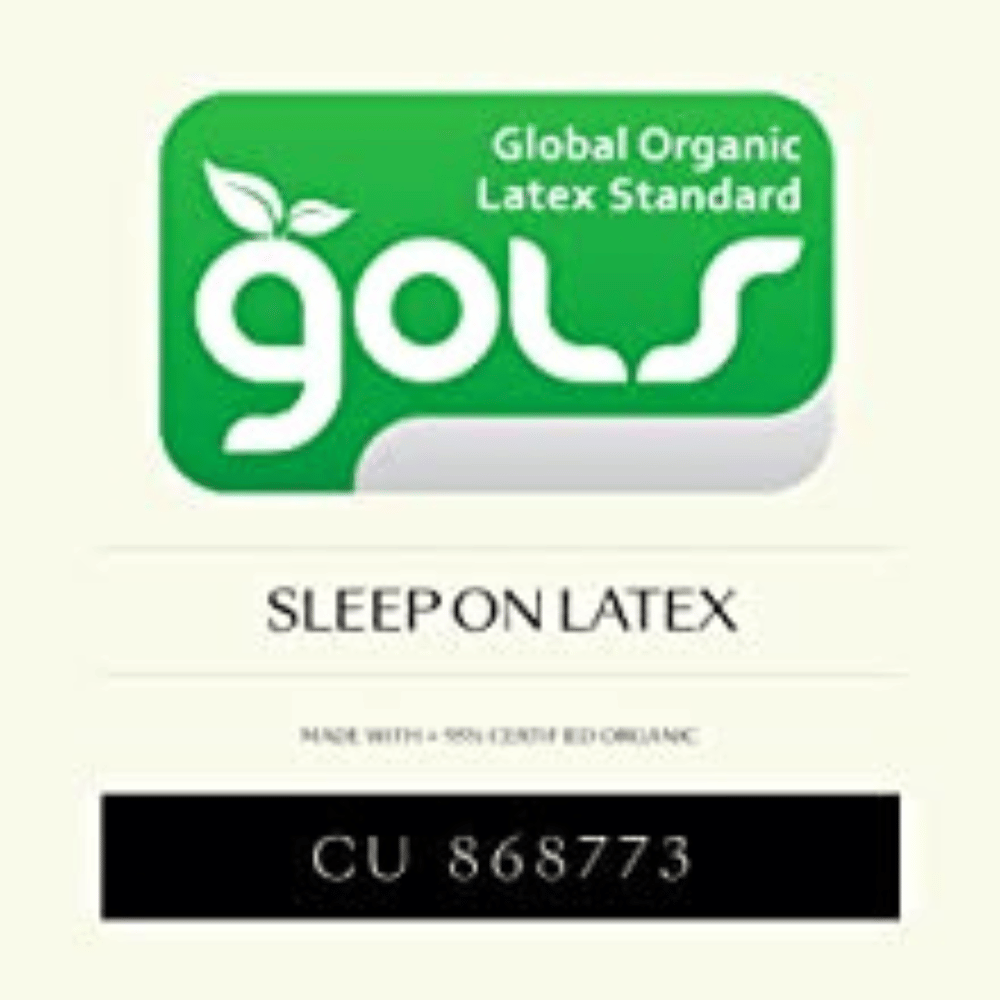
Shipping and Returns
Latex for Less provides free shipping within the contiguous U.S. and offers hassle-free returns. Customers can return the high-quality mattress within the trial period for a full refund if unsatisfied.
Trial Period and Warranty
The Latex for Less Full Natural Latex Mattress includes a 120-night sleep trial and a 20-year limited warranty, ensuring long-term customer satisfaction.
My Verdict
The Latex for Less Full Natural Latex Mattress is an excellent budget-friendly option for eco-conscious sleepers looking for natural comfort and durability.
While edge support could be stronger, its dual-sided firmness, pressure-relieving latex, and certified organic materials make it a worthwhile investment for a healthy and supportive sleep experience.

Birch Luxe Natural Mattress
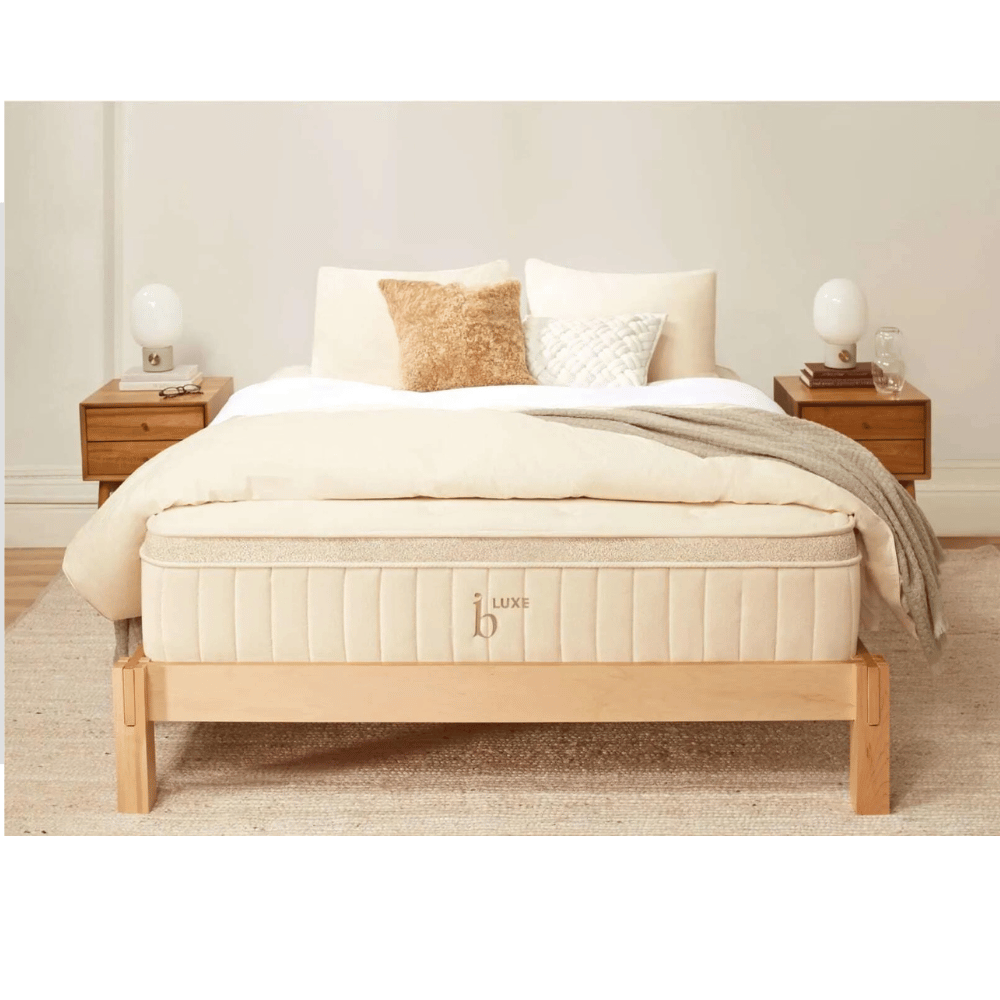
Price Range: $1218–$2343 (With discount)
Rating: 4.7/5
Best for Side and Back Sleepers
This Birch mattress's plush latex and wool layers offer excellent pressure relief for side sleepers. Its responsive coil system maintains spinal alignment, and back sleepers benefit from it.
The mattress's balanced support and breathability make it a great choice for those who need both contouring and stability for a restful night’s sleep.
Core Features & Advantages
- Materials and Construction
- Made with sustainably sourced natural Talalay latex for durability and comfort.
- Organic cotton cover enhances breathability and offers a soft, luxurious feel.
- Layers of organic wool provide moisture-wicking and temperature regulation.
- Individually wrapped coils offer targeted support and motion isolation.
- Firmness and Feel
- Medium-firm feel (6.5/10), ideal for support and comfort.
- Latex offers a naturally buoyant feel, preventing excessive sinkage.
- Responsive and adaptive, making it easy to change positions at night.
- Pressure Relief
- Latex contours gently to relieve pressure in sensitive areas like hips and shoulders.
- Zoned coils offer targeted support and help with weight distribution.
- Minimizes stress on joints, reducing discomfort for sleepers with pain concerns.
- Temperature Regulation
- Natural latex and wool wick away moisture and prevent heat buildup.
- The breathable organic cotton cover enhances airflow.
- Coils promote ventilation, keeping sleepers cool throughout the night.
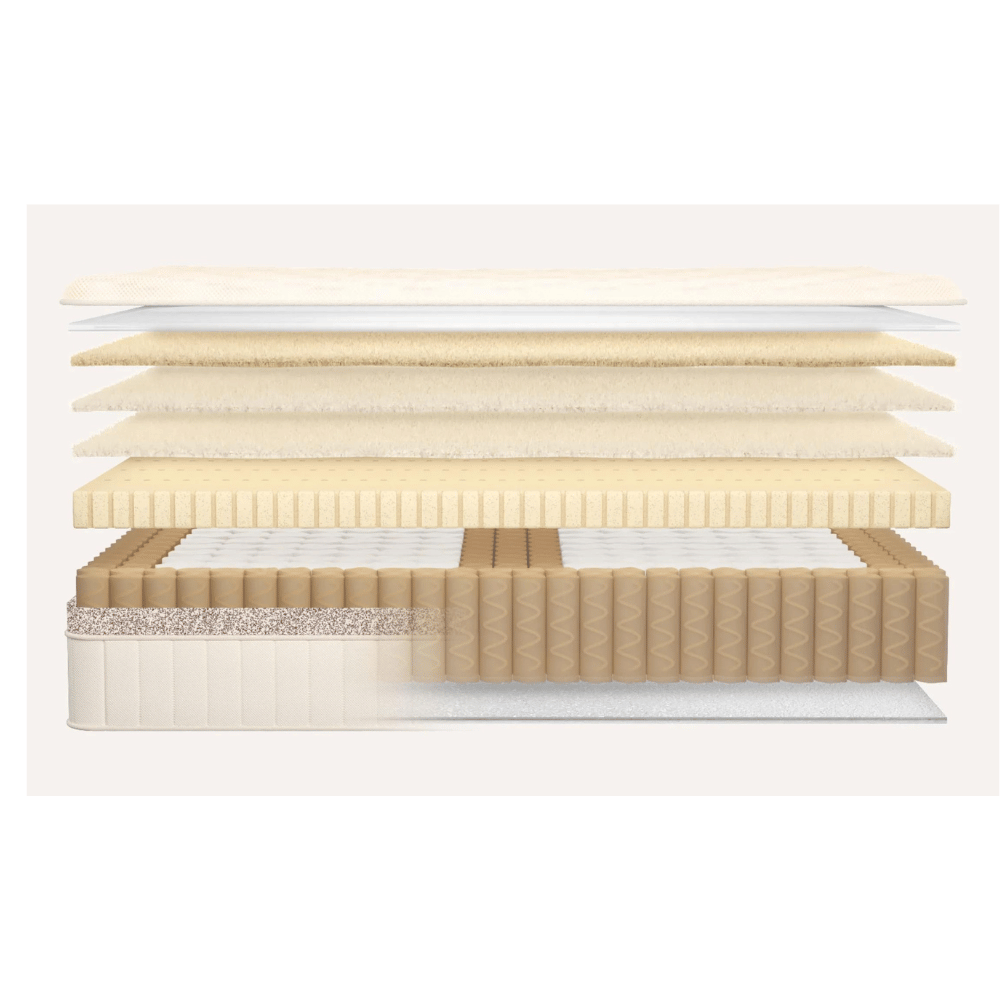
Pros and Cons
Pros
- Excellent Cooling: Natural latex and wool layers keep the mattress cool.
- Durable and Long-Lasting: Made with high-quality, sustainable materials for longevity.
- Great for Pressure Relief: Zoned support system alleviates discomfort in key areas.
Con
- Higher Price Point: Premium materials make this mattress more expensive than budget.
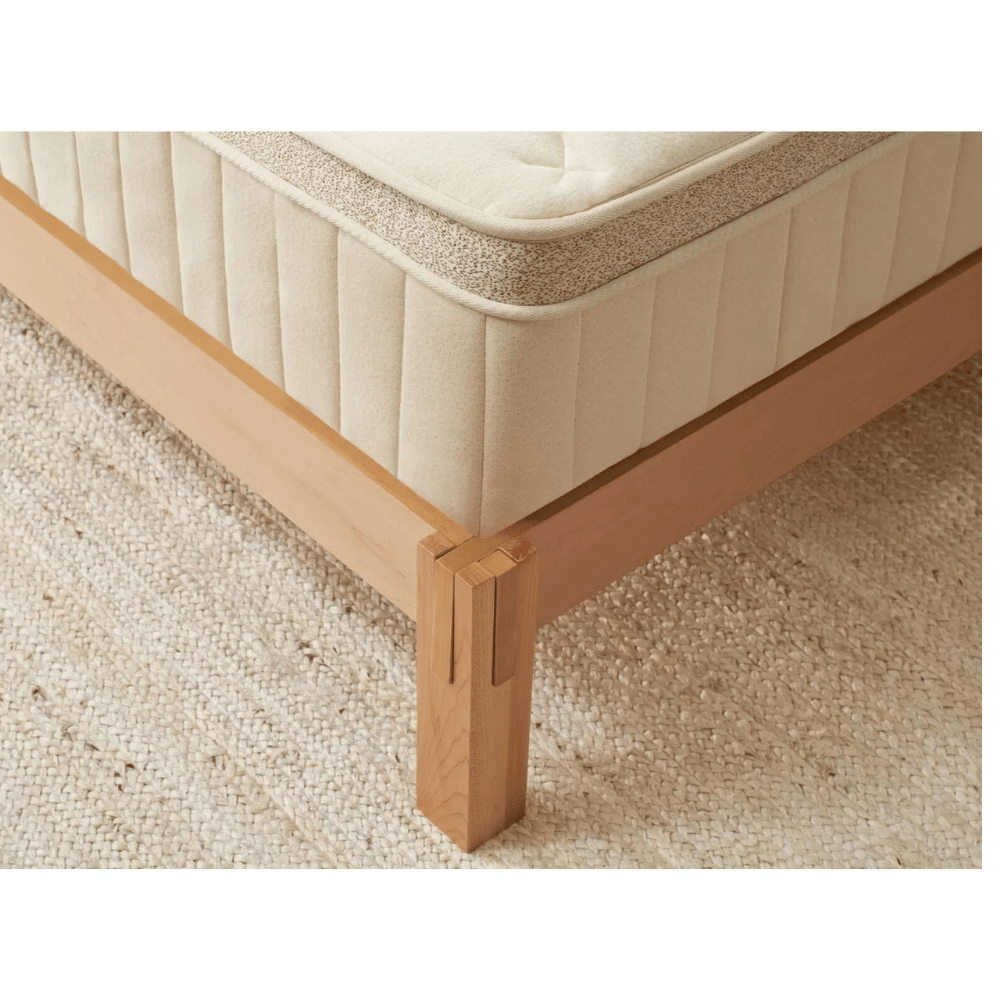
Comprehensive Analysis: Comfort, Support, and Performance
- Edge Support
- Reinforced perimeter prevents sagging and enhances usable sleep space.
- Stable edges make sitting or getting in and out of bed easier.
- Ideal for couples needing extra sleeping surface support.
- Motion Isolation
- Individually wrapped coils prevent motion transfer.
- Natural latex absorbs movement better than traditional foam.
- Great for couples or light sleepers who are easily disturbed.
- Certifications and Eco-Friendliness
- GOTS-certified organic cotton and wool ensure ethical production.
- GOLS-certified latex guarantees sustainability and eco-friendly sourcing.
- GREENGUARD Gold certified for low chemical emissions and indoor air quality.
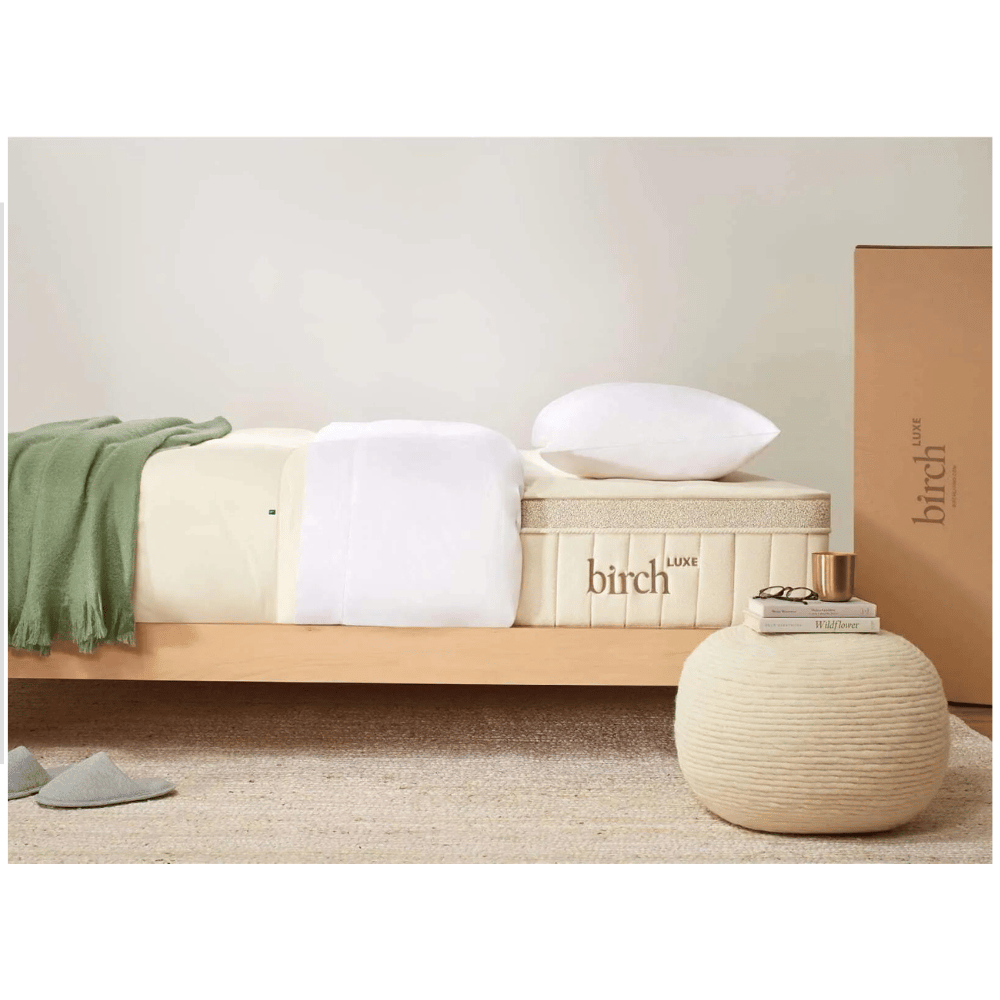
Shipping and Returns
Birch provides free shipping across the contiguous U.S. and a hassle-free return policy. Customers can return the mattress within the trial period for a full refund if unsatisfied.
Trial Period and Warranty
The Birch Luxe Natural Mattress includes a 100-night sleep trial and a 25-year limited warranty, ensuring long-term satisfaction and protection against defects.
My Verdict
The Birch Luxe Natural Mattress is a top-tier choice for eco-conscious sleepers seeking a luxurious, supportive, breathable mattress.
While it’s pricier, its premium organic materials, durability, and excellent comfort make it a worthy investment for long-term sleep quality.

Nolah Natural 11” Mattress

Price Range: $974–$2209 (With discount)
Rating: 4.5/5
Best for Side and Back Sleepers
This Nolah mattress provides plush contouring for side sleepers, alleviating pressure on shoulders and hips. The zoned coil support ensures proper spinal alignment for back sleepers. While stomach sleepers may find adequate support, heavier individuals may prefer a firmer option for better weight distribution.
Top Benefits & Features
- Materials and Construction
- Made with 100% natural Talalay latex, offering a responsive and breathable feel.
- GOTS-certified organic cotton cover enhances softness and airflow.
- Organic wool layer wicks moisture and regulates temperature.
- Zoned support coils provide targeted pressure relief and reduce motion transfer.
- Firmness and Feel
- Medium-firm feel (6.5/10), offering a balance of contouring and support.
- Talalay latex provides a buoyant, cloud-like sensation.
- Adaptive and responsive, making it ideal for combination sleepers.
- Pressure Relief
- Zoned latex adapts to the body’s shape, reducing tension in key areas.
- Lumbar support from coils ensures spinal alignment.
- Excellent for relieving shoulders, hips, and lower back discomfort.
- Temperature Regulation
- Talalay latex and organic wool promote airflow and cooling.
- The breathable cotton cover prevents heat retention.
- Coil system enhances ventilation, making it suitable for hot sleepers.
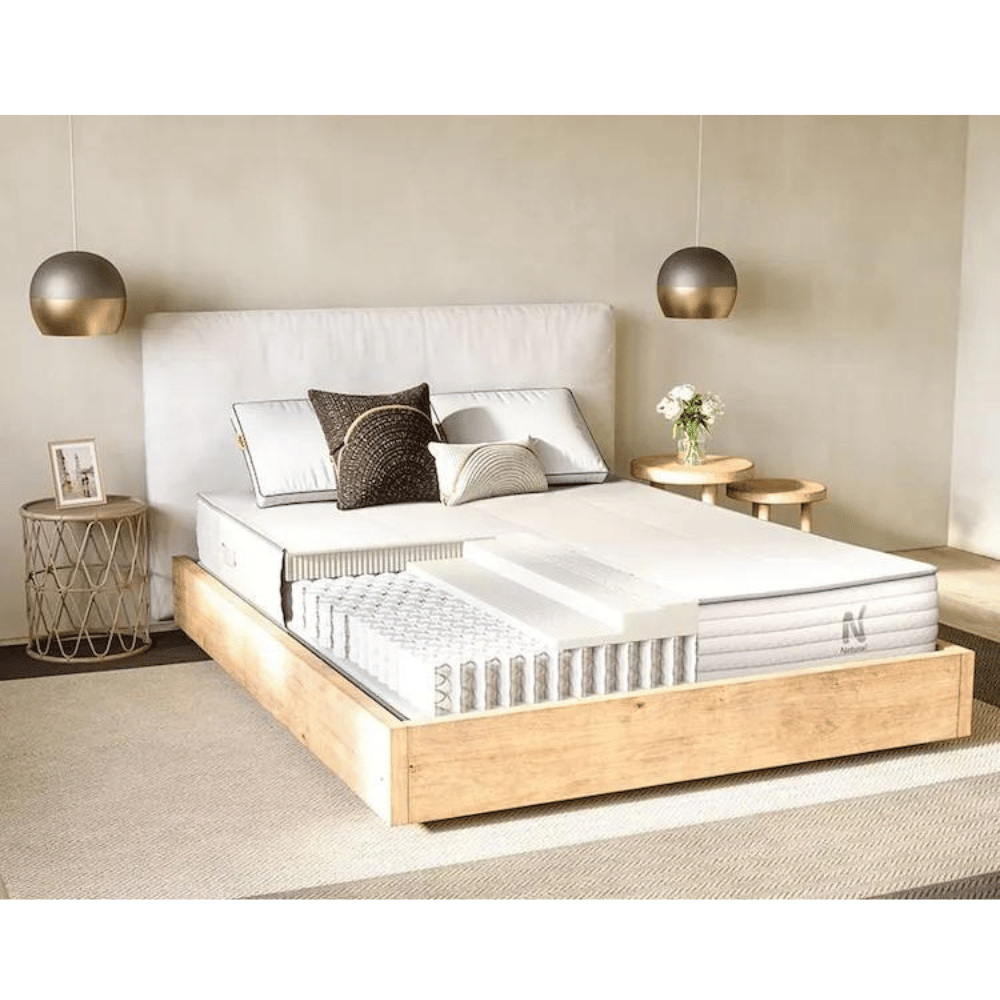
Pros and Cons
Pros
- Exceptional Pressure Relief: Latex and zoned coils provide targeted comfort.
- Highly Breathable and Cooling: Organic materials help maintain a neutral temperature.
- Eco-Friendly Construction: Made with sustainable, certified organic materials.
Con
- May Not Be Firm Enough for Stomach Sleepers: Heavier sleepers may prefer a firmer option.

Detailed Breakdown: Sleep Quality, Stability, and Longevity
- Edge Support
- Reinforced coils provide stability along the perimeter.
- Strong edges prevent sagging, maximizing the sleep surface.
- Ideal for those who need additional support when sitting or getting out of bed.
- Motion Isolation
- Individually wrapped coils minimize motion transfer.
- Talalay latex absorbs movement better than traditional innerspring designs.
- Great for couples who want to avoid sleep disturbances.
- Certifications and Eco-Friendliness
- GOTS-certified organic cotton and GOTS-certified organic wool ensure ethical sourcing.
- GOLS-certified natural latex provides an eco-conscious alternative to synthetic foam.
- GREENGUARD Gold certified for low emissions and improved indoor air quality.
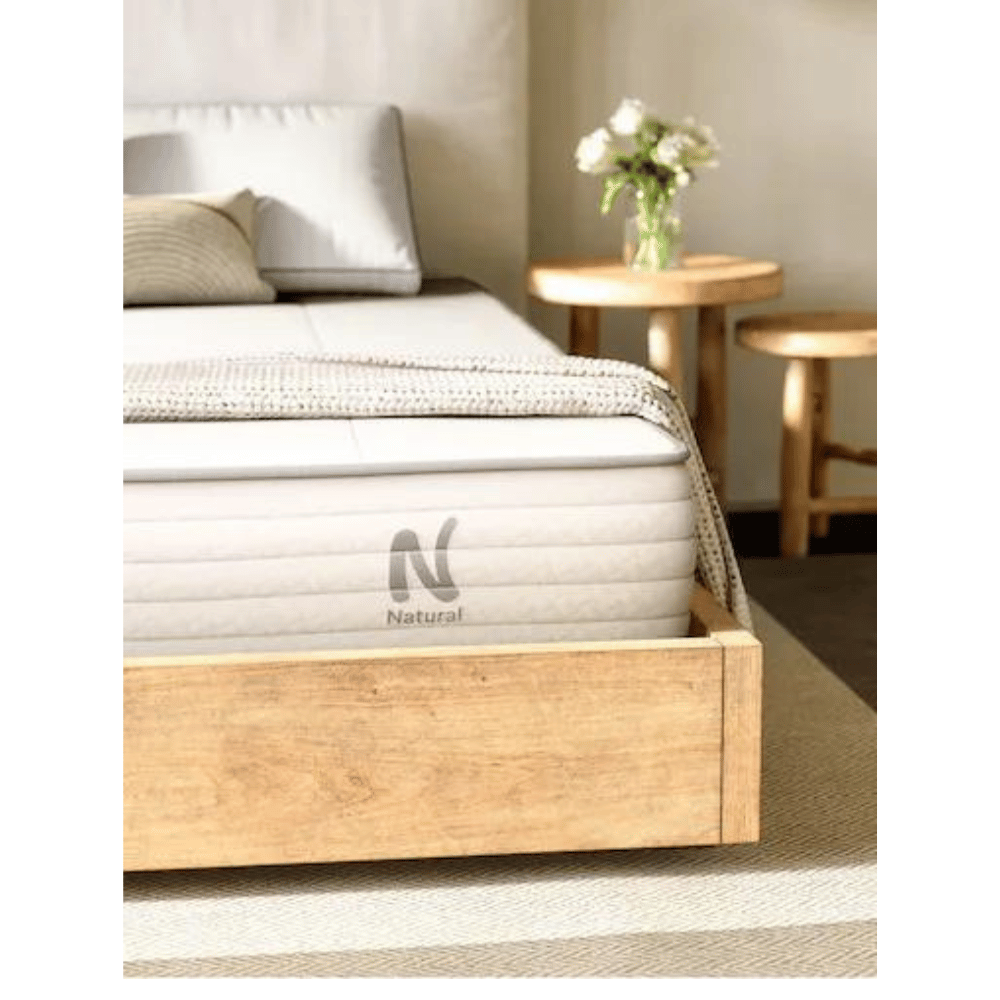
Shipping and Returns
Nolah offers free shipping within the contiguous U.S. and a hassle-free return process. Customers can return the mattress within the trial period for a full refund if unsatisfied.
Trial Period and Warranty
The Nolah Natural 11” Mattress has a 120-night sleep trial and a lifetime warranty, demonstrating the company’s confidence in its durability and comfort.
My Verdict
The Nolah Natural 11” Mattress is a premium option for eco-conscious sleepers seeking a responsive, pressure-relieving, breathable sleep experience.
While stomach sleepers needing extra firmness may look elsewhere, its balanced support, cooling materials, and organic construction make it a standout choice for those valuing sustainability and comfort.

Avocado Green Mattress

Price Range: $1,189 –$2,294 (With discount)
Rating: 4.8/5
Best for Back and Stomach Sleepers
With firm support from its zoned coil system, this mattress is perfect for back and stomach sleepers needing proper spinal alignment. Side sleepers may find it too firm, though the pillow-top version offers added cushioning for pressure relief, making it a slightly more adaptable option.
Performance & Key Features
- Materials and Construction
- Global Organic Latex Standard: Made with 100% GOLS-certified organic Dunlop latex for durability and responsiveness.
- The GOTS-certified organic cotton cover provides a breathable and soft surface.
- Organic wool layer naturally wicks moisture and enhances fire resistance.
- Reinforced steel coil system offers zoned support and stability.
- Firmness and Feel
- Medium-firm feel (7/10) offers a sturdy and supportive sleeping surface.
- Latex provides a slightly bouncy yet pressure-relieving sensation.
- Available with an optional pillow-top for added plushness.
- Pressure Relief
- Zoned coils ensure targeted relief for the shoulders and hips.
- Latex conforms to the body without excessive sinkage.
- Great for back and stomach sleepers needing proper lumbar support.
- Temperature Regulation
- Latex and wool materials allow airflow and heat dissipation.
- The breathable cotton cover helps prevent heat buildup.
- The coil system enhances ventilation, keeping sleepers cool overnight.

Pros and Cons
Pros
- Eco-Friendly and Non-Toxic: Made with organic and sustainable materials.
- Excellent Support for Back and Stomach Sleepers: Firmness level promotes proper spinal alignment.
- Highly Durable: Dunlop latex and reinforced coils extend mattress longevity.
Con
- Too Firm for Some Side Sleepers: Without the pillow-top option, it may lack sufficient cushioning.
Thorough Evaluation: Comfort, Strength, and Resilience
- Edge Support
- Reinforced perimeter prevents sagging and increases the usable sleep surface.
- Sturdy edges provide excellent stability when sitting or getting out of bed.
- Ideal for couples needing consistent support across the entire mattress.
- Motion Isolation
- Individually wrapped coils minimize motion transfer.
- Latex absorbs movement, reducing disturbances from partner shifts.
- Suitable for light sleepers sharing a bed.
- Certifications and Eco-Friendliness
- GOTS-certified organic cotton and wool ensure sustainable sourcing.
- GOLS-certified latex guarantees purity and environmental responsibility.
- GREENGUARD Gold certified for low chemical emissions.

Shipping and Returns
Avocado offers free shipping across the contiguous U.S. and allows hassle-free returns. Customers can return the mattress within the trial period for a full refund if unsatisfied.
Trial Period and Warranty
The Avocado Green Mattress includes a 1-year sleep trial and a 25-year limited warranty, reflecting its durability and commitment to customer satisfaction.
My Verdict
The Avocado Green Mattress is a top choice for eco-conscious sleepers looking for firm, organic support.
While side sleepers may prefer the pillow-top version, its natural materials, durability, and responsive comfort make it a smart investment for long-term, healthy sleep.

PlushBeds Botanical Bliss Mattress
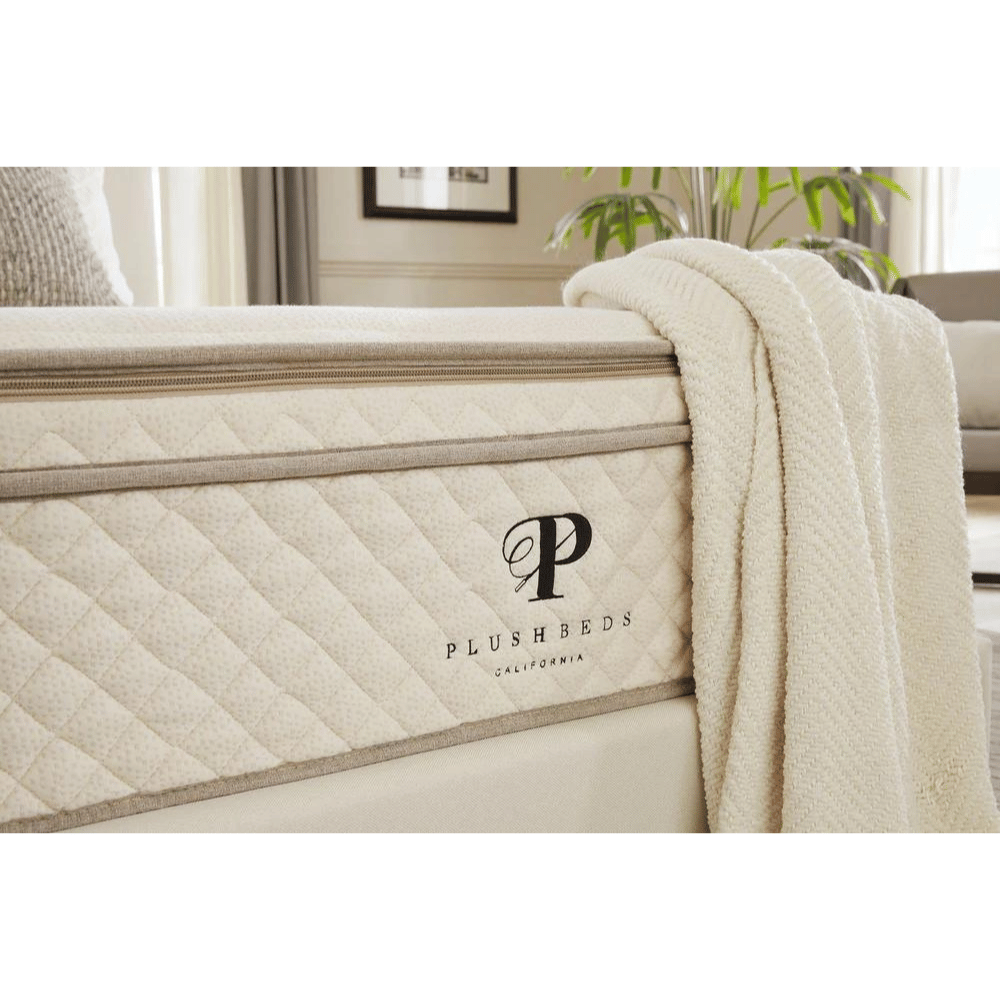
Price Range: $1399–$2,398 (With discount)
Rating: 4.7/5
Best for Side and Back Sleepers
Side sleepers enjoy the pressure-relieving contour of the plush latex layers, while back sleepers benefit from excellent spinal support. Those preferring a firmer surface may opt for the firmer model, which provides additional stability for stomach sleepers needing more structured support.
Product Highlights & Benefits
- Materials and Construction
- Made with GOLS-certified organic Dunlop latex, providing a responsive and durable sleep surface.
- GOTS-certified organic cotton cover enhances breathability and softness.
- Organic wool layer naturally regulates temperature and wicks away moisture.
- Customizable firmness levels allow sleepers to adjust the latex layers to their comfort preference.
- Firmness and Feel
- Available in multiple firmness levels (medium and firm) to suit different sleep preferences.
- Latex provides a buoyant and slightly bouncy feel, preventing excessive sinkage.
- Offers a balance of plush cushioning and firm support for spinal alignment.
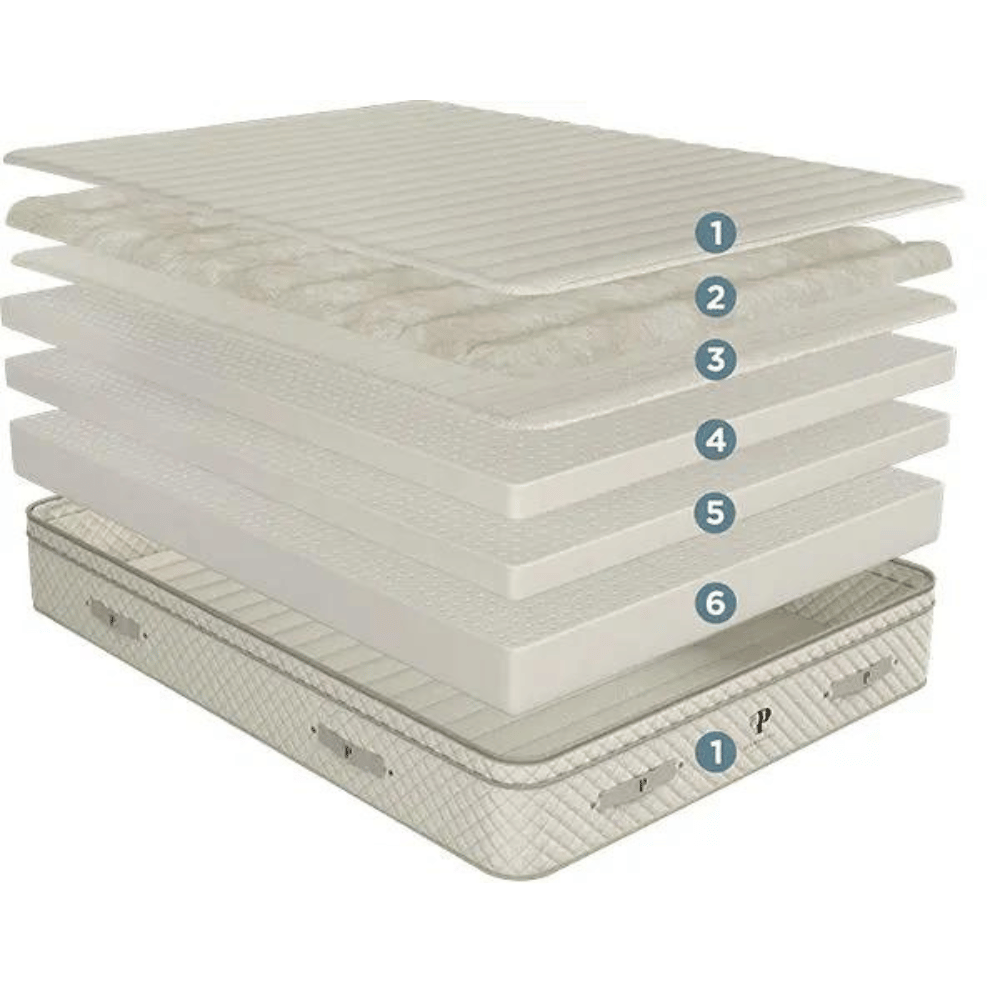
- Pressure Relief
- Adaptive latex contours to the body, reducing pressure on the shoulders, hips, and lower back.
- Zoned support ensures proper weight distribution.
- Ideal for sleepers with joint pain or those needing targeted comfort.
- Temperature Regulation
- Open-cell latex structure promotes airflow and prevents heat retention.
- Organic wool and cotton cover help wick moisture and maintain a cool sleep environment.
- Naturally breathable materials make it a great option for hot sleepers.
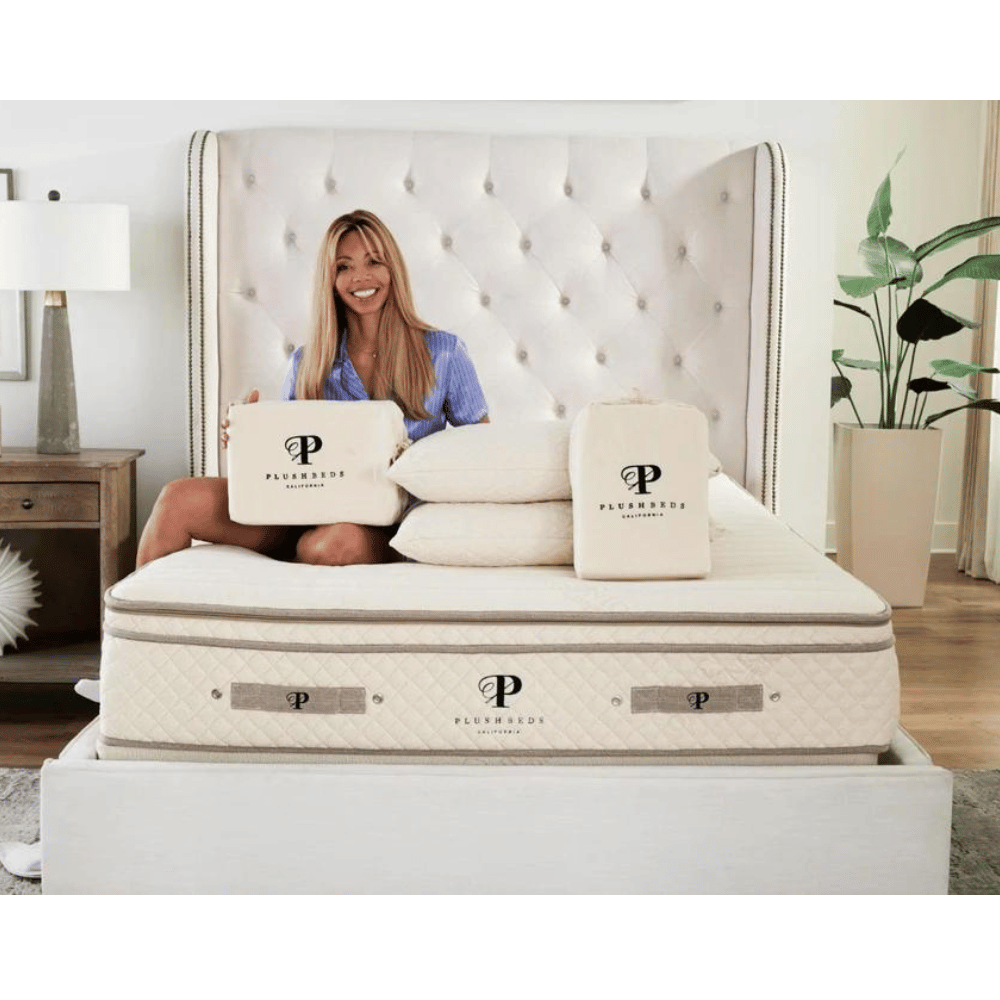
Pros and Cons
Pros
- Customizable Comfort: Multiple firmness options allow personalized support.
- Superior Pressure Relief: Latex conforms to the body while maintaining responsiveness.
- Eco-Friendly and Certified Organic: Sustainably sourced materials with top industry certifications.
Con
- Higher Price Point: Premium organic materials are more expensive than standard mattresses.
Expert Insights: Support, Pressure Relief, and Sleep Experience
Edge Support
- Reinforced latex layers provide stable edge support.
- Prevents excessive sagging and increases the usable sleep surface.
- Strong edge support benefits those who sit or sleep near the perimeter.
- Motion Isolation
- Dunlop latex absorbs motion efficiently, reducing partner disturbances.
- Layers of organic wool and cotton further minimize movement transfer.
- Ideal for couples who share a bed but want undisturbed sleep.

- Certifications and Eco-Friendliness
- GOTS-certified organic cotton and wool ensure sustainable and ethical sourcing.
- GOLS-certified latex guarantees environmentally friendly and non-toxic materials.
- GREENGUARD Gold certification ensures low chemical emissions for a healthier sleep environment.
Shipping and Returns
PlushBeds offers free shipping across the contiguous U.S. and provides a hassle-free return process. Customers can return the mattress within the trial period for a full refund if unsatisfied.
Trial Period and Warranty
The PlushBeds Botanical Bliss Mattress includes a 100-night sleep trial and a 25-year limited warranty, reflecting the brand’s commitment to durability and customer satisfaction.
My Verdict
The PlushBeds Botanical Bliss Mattress is a luxurious organic latex option for eco-conscious sleepers seeking superior comfort and customization.
While its price point is higher than average, its premium materials, durability, and adjustable firmness make it a worthwhile investment for long-term sleep quality.

FloBeds Natural Latex vZone Mattress

Price Range: $2,499–$3,499 (With discount)
Rating: 4.6/5
Best for Side, Back, and Combination Sleepers
Customizable latex layers and targeted zoning provide optimal pressure relief for side sleepers, while back sleepers experience proper spinal alignment. Its adaptability makes it a great option for combination sleepers who frequently shift positions throughout the night without sacrificing support or comfort.
Features & Sleeping Benefits
- Materials and Construction
- Made with GOLS-certified organic Dunlop latex, ensuring durability and natural resilience.
- The GOTS-certified organic cotton cover enhances breathability and comfort.
- Natural wool layer provides moisture-wicking and temperature regulation.
- The vZone support layer offers personalized zoning adjustments for optimal spinal alignment.
- Firmness and Feel
- Fully customizable firmness levels allow sleepers to tailor their comfort.
- Zoned latex layers provide targeted support and contouring.
- Offers a buoyant and responsive feel while preventing excessive sinkage.
- Pressure Relief
- The vZone system provides specific zones of softness or firmness for different body areas.
- Reduces pressure points in the shoulders and hips, making it ideal for side sleepers.
- Lumbar support ensures proper alignment and comfort for back and stomach sleepers.
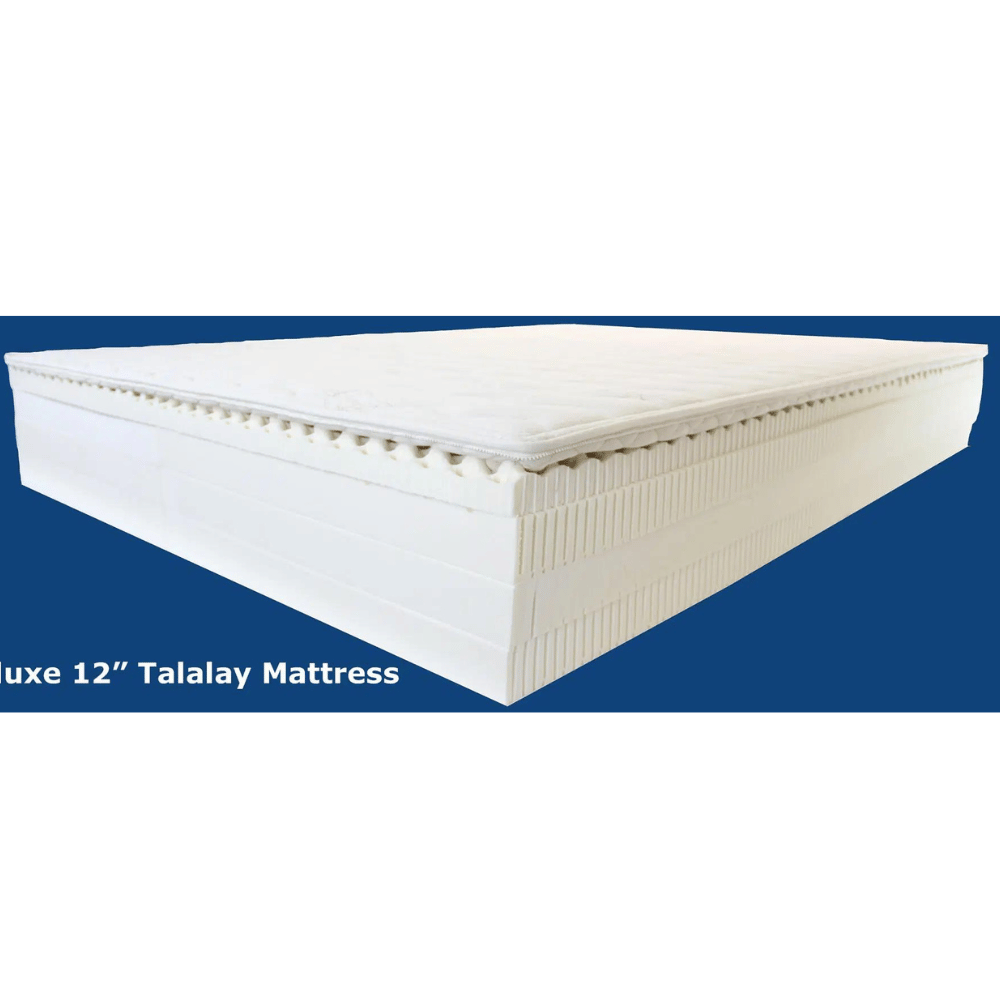
- Temperature Regulation
- Open-cell latex promotes airflow and prevents overheating.
- Natural wool wicks moisture and helps regulate body temperature.
- Breathable organic cotton cover keeps the sleep surface cool.
Pros and Cons
Pros
- Fully Adjustable Comfort: Customizable firmness levels for each sleeper.
- Excellent Pressure Relief: Zoned support system provides targeted comfort.
- Eco-Friendly and Sustainable: Made with certified organic materials.
Con
- Higher Price Point: The customization and premium materials make it more expensive than standard latex mattresses.
Full Assessment: Comfort, Stability, and Sleep Performance
Edge Support
- Reinforced latex layers provide consistent edge stability.
- Prevents excessive sagging and increases usable sleep surface.
- Ideal for those who need firm support while sitting or sleeping near the edge.
- Motion Isolation
- Dunlop latex absorbs motion efficiently, reducing partner disturbances.
- The vZone system minimizes movement transfer between sleep zones.
- Excellent for couples seeking undisturbed sleep.
- Certifications and Eco-Friendliness
- GOTS-certified organic cotton and wool ensure sustainable and ethical sourcing.
- GOLS-certified latex guarantees environmentally friendly and non-toxic materials.
- GREENGUARD Gold certification ensures low emissions for a healthier sleep environment.
Shipping and Returns
FloBeds offers free shipping across the contiguous U.S. and allows customers to adjust their mattress by exchanging latex layers rather than returning the entire mattress, making the return process seamless and environmentally friendly.
Trial Period and Warranty
The FloBeds Natural Latex vZone Mattress includes a 100-night sleep trial and a 20-year limited warranty, demonstrating confidence in its durability and long-term comfort.
My Verdict
The FloBeds Natural Latex vZone Mattress is an outstanding choice for those seeking a fully customizable, eco-friendly sleep solution. While it comes at a premium price, its adjustable layers, targeted support, and sustainable materials make it a top-tier investment for long-term sleep quality and comfort.

Brooklyn Bedding Ecosleep Luxe Mattress
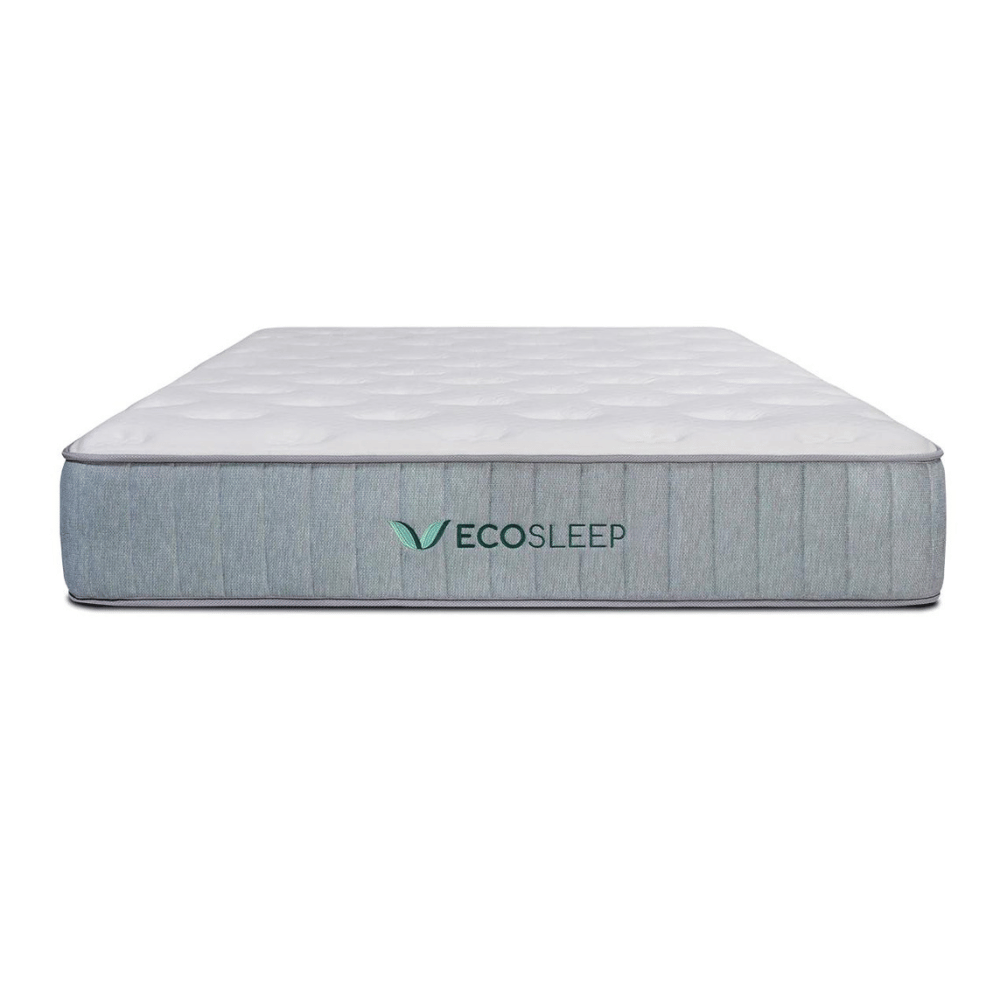
Price Range: $695.25–$1295.25 (With discount)
Rating: 4.5/5
Best for Back, Stomach, and Combination Sleepers
This mattress is designed for firm support and promotes spinal alignment for back and stomach sleepers. Its flippable design provides a softer side for side sleepers needing more contouring. The adaptable feel also makes it suitable for combination sleepers who need comfort and stability.
Design & Sleep Benefits
- Materials and Construction
- Made with 100% natural latex for durability, responsiveness, and breathability.
- Flippable design with two firmness options for personalized comfort.
- GOTS-certified organic cotton cover enhances airflow and moisture control.
- Pocketed coil system provides targeted support and motion isolation.
- Firmness and Feel
- Dual-sided design offers a firm (7.5/10) and medium-firm (6/10) option.
- Latex provides a naturally buoyant and responsive sleep surface.
- Hybrid construction balances plush comfort with sturdy support.
- Pressure Relief
- The zoned coil system and latex layers relieve pressure points.
- Medium-firm side offers better contouring for the shoulders and hips.
- Ideal for sleepers seeking targeted lumbar support and reduced joint stress.
- Temperature Regulation
- Open-cell latex structure enhances breathability and heat dissipation.
- Organic cotton and wool help wick away moisture.
- The coil system promotes continuous airflow, preventing heat buildup.
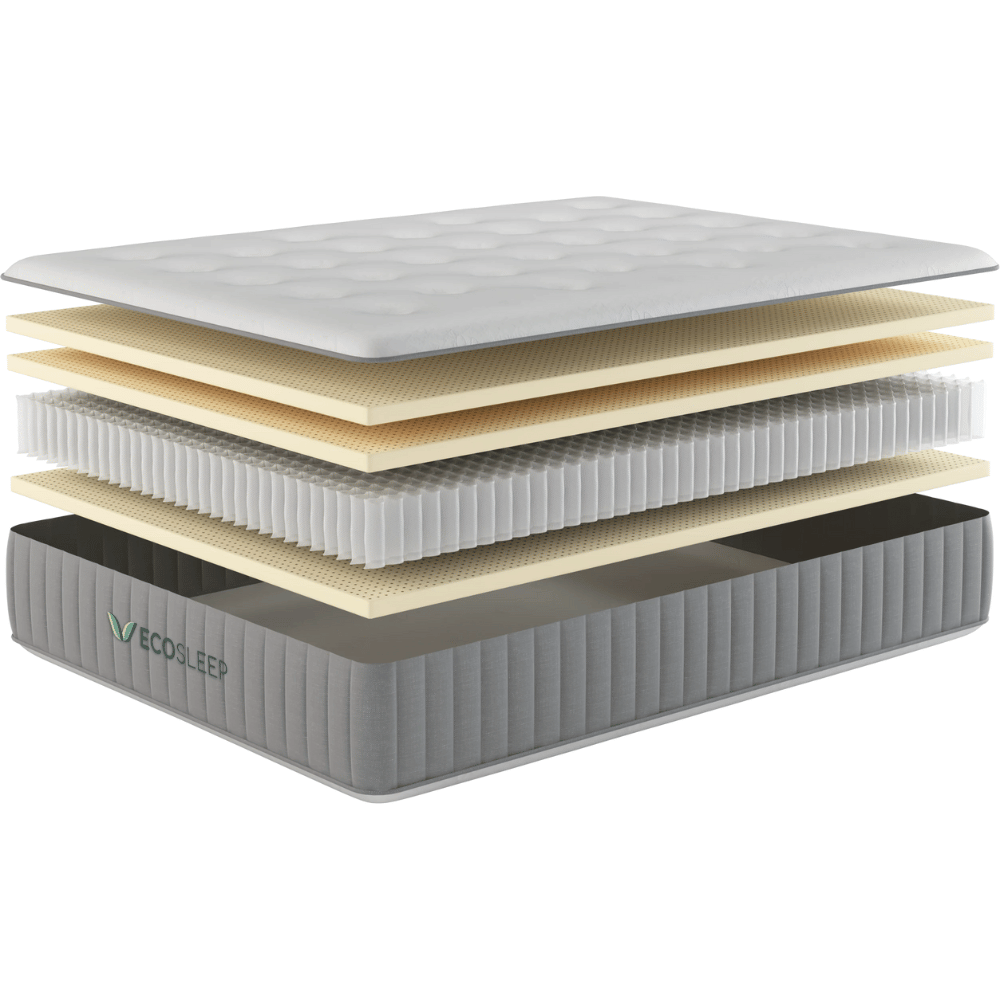
Pros and Cons
Pros
- Flippable Design: zoma comfort.
- Excellent Cooling Properties: Breathable latex, wool, and coils promote airflow.
- Great for Stomach and Back Sleepers: Firm support keeps the spine aligned.
Con
- Not Ideal for Soft Mattress Lovers: Even the softer side may feel too firm for those who prefer plush cushioning.
Extensive Review: Mattress Comfort, Structure, and Longevity
- Edge Support
- Reinforced coils along the perimeter prevent sagging.
- Strong edges enhance durability and maximize the usable sleep surface.
- Stable design makes it easy to sit or sleep near the edges.
- Motion Isolation
- Individually wrapped coils reduce motion transfer.
- Latex absorbs movement better than traditional innerspring models.
- Good choice for couples seeking minimal sleep disruptions.
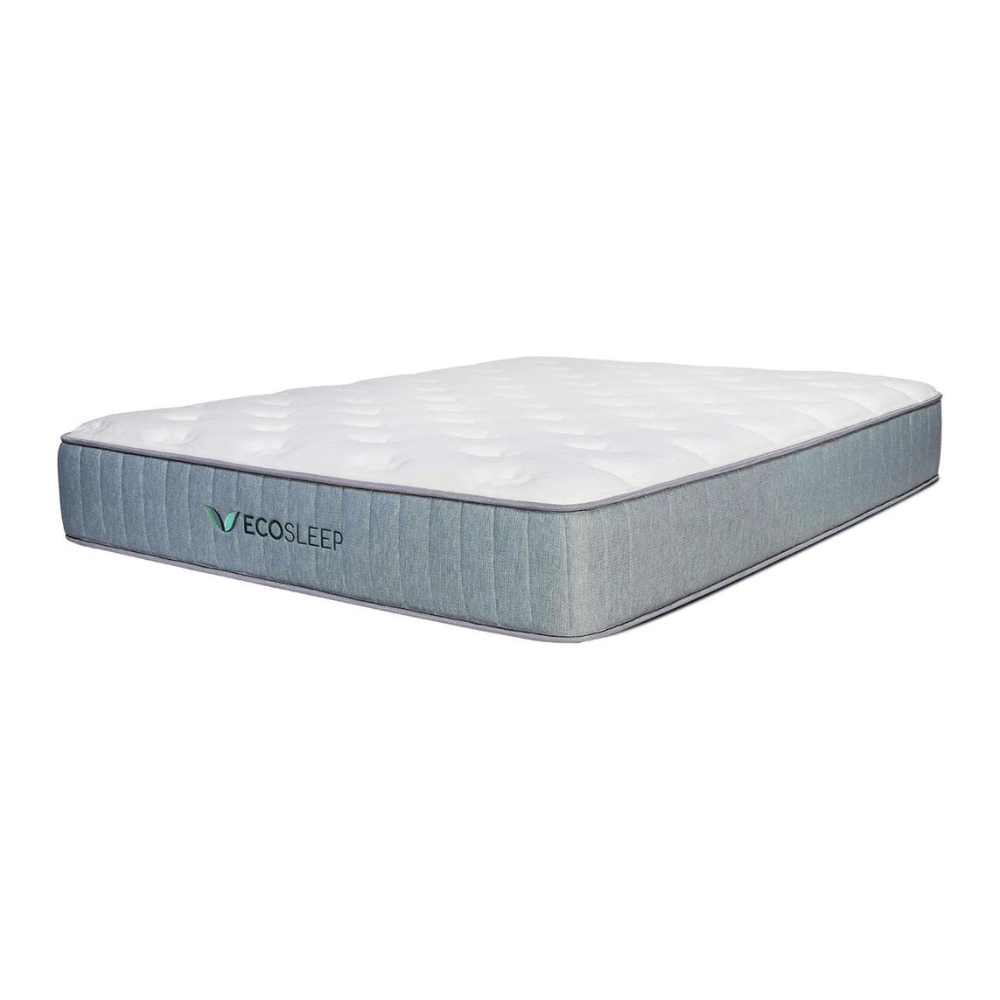
- Certifications and Eco-Friendliness
- GOTS-certified organic cotton and wool ensure sustainable sourcing.
- Latex is sustainably harvested and free from synthetic chemicals.
- GREENGUARD Gold certification guarantees low emissions and non-toxic materials.
Shipping and Returns
Brooklyn Bedding offers free shipping across the contiguous U.S. and a hassle-free return policy. Customers can return the mattress within the trial period for a full refund if unsatisfied.
Trial Period and Warranty
The Brooklyn Bedding Ecosleep Luxe Mattress has a 120-night sleep trial and a 10-year limited warranty, ensuring long-term customer satisfaction and durability.
My Verdict
The Brooklyn Bedding Ecosleep Luxe Mattress is a well-rounded option for eco-conscious sleepers who prefer firmer support and customizable comfort.
While it may not be the best choice for those who love ultra-plush mattresses, its flippable design, breathable materials, and sturdy hybrid construction make it a great long-term investment.

Happsy Organic Mattress

Price Range: $899.00- $1,699.00
Rating: 4.3/5.00
Best for Back and Side Sleepers
This mattress balances contouring and support with a responsive latex layer for side sleepers and a pocketed coil system for back sleepers. Stomach sleepers may find it slightly too soft, but it remains a great eco-friendly choice for those who prioritize organic materials and breathability.
Key Aspects & Advantages
- Materials and Construction
- Made with GOLS-certified organic Dunlop latex for a naturally buoyant and durable sleep surface.
- GOTS-certified organic cotton cover enhances breathability and softness.
- Organic wool layer acts as a natural fire barrier while regulating moisture and temperature.
- Pocketed coil system delivers targeted support and reduces motion transfer.
- Firmness and Feel
- Medium-firm feel (6.5/10) offers an ideal balance of comfort and support.
- Latex provides a resilient, responsive surface with a slight bounce.
- Suitable for sleepers who prefer a supportive yet adaptive mattress.
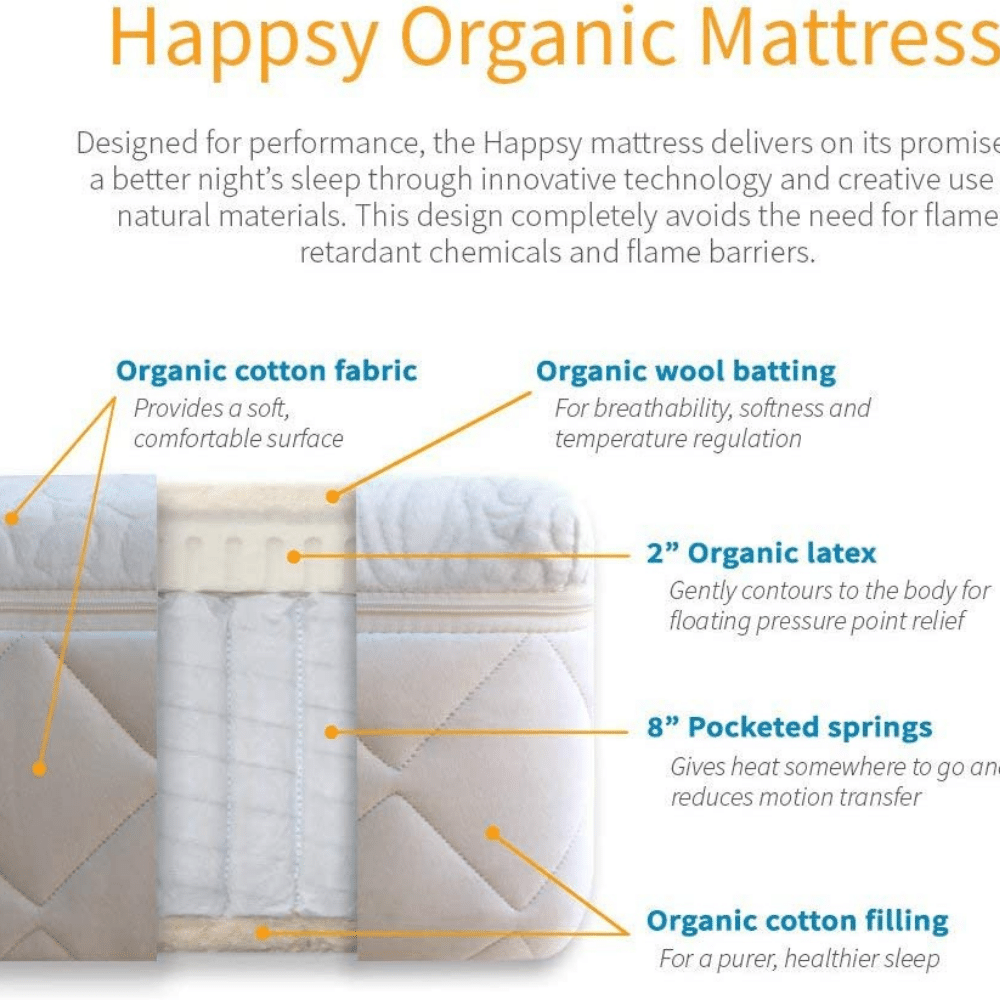
- Pressure Relief
- Natural latex conforms to the body, reducing pressure on the hips, shoulders, and back.
- The zoned coil system provides targeted lumbar support.
- Ideal for sleepers with joint pain or those needing relief in sensitive areas.
- Temperature Regulation
- Breathable organic cotton and wool wick away moisture and help regulate temperature.
- Latex’s open-cell structure promotes airflow, preventing heat buildup.
- The coil system enhances ventilation, making it a great option for hot sleepers.
Pros and Cons
Pros
- Eco-Friendly and Certified Organic: Made with sustainably sourced, chemical-free materials.
- Excellent Pressure Relief: Latex and pocketed coils offer adaptive support.
- Great Temperature Regulation: Organic wool and breathable latex keep sleepers cool.
Con
- Limited Firmness Options: Only available in medium-firm, which may not suit those needing a very firm or soft mattress.
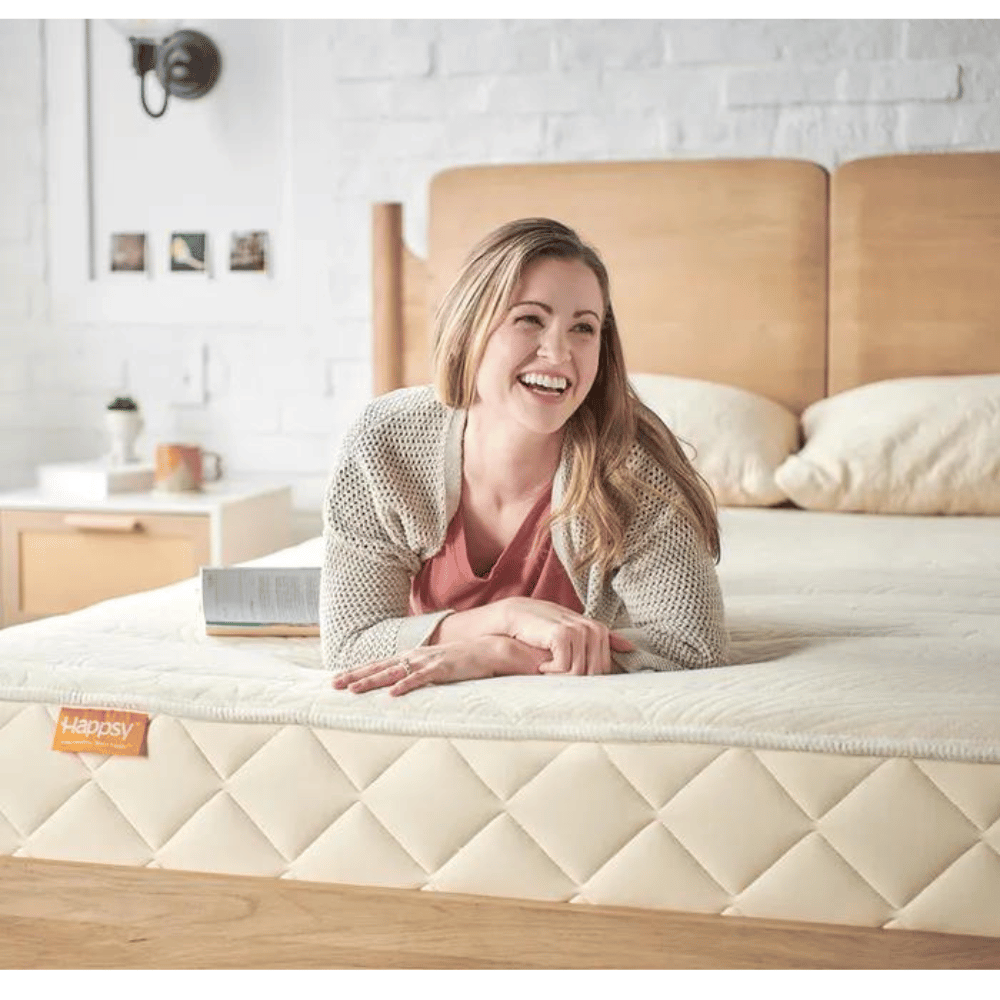
Extensive Review: Mattress Comfort, Structure, and Longevity
Edge Support
- Reinforced coils provide stability and prevent sagging at the edges.
- Offers a consistent sleep surface across the entire mattress.
- Ideal for those who sit or sleep near the edge of the bed.
- Motion Isolation
- Pocketed coils reduce motion transfer, making it a good choice for couples.
- Latex absorbs movement better than traditional spring mattresses.
- Helps prevent sleep disturbances caused by partner movements.
- Certifications and Eco-Friendliness
- GOTS-certified organic cotton and wool ensure ethical and sustainable sourcing.
- GOLS-certified organic latex guarantees eco-friendly and non-toxic materials.
- GREENGUARD Gold certified for low emissions and improved indoor air quality.
Shipping and Returns
Happsy offers free shipping within the contiguous U.S. and a hassle-free return process. Customers can return the high-quality mattress within the trial period for a full refund if unsatisfied.
Trial Period and Warranty
The Happsy Organic Mattress includes a 120-night sleep trial and a 20-year limited warranty, demonstrating the company’s confidence in its durability and comfort.
My Verdict
The Happsy Organic Mattress with Organic Latex is an excellent choice for eco-conscious sleepers who prioritize natural materials, pressure relief, and breathability.
While it only comes in one firmness option, its balanced feel, durable construction, and sustainable design make it a worthwhile investment for long-term sleep quality.
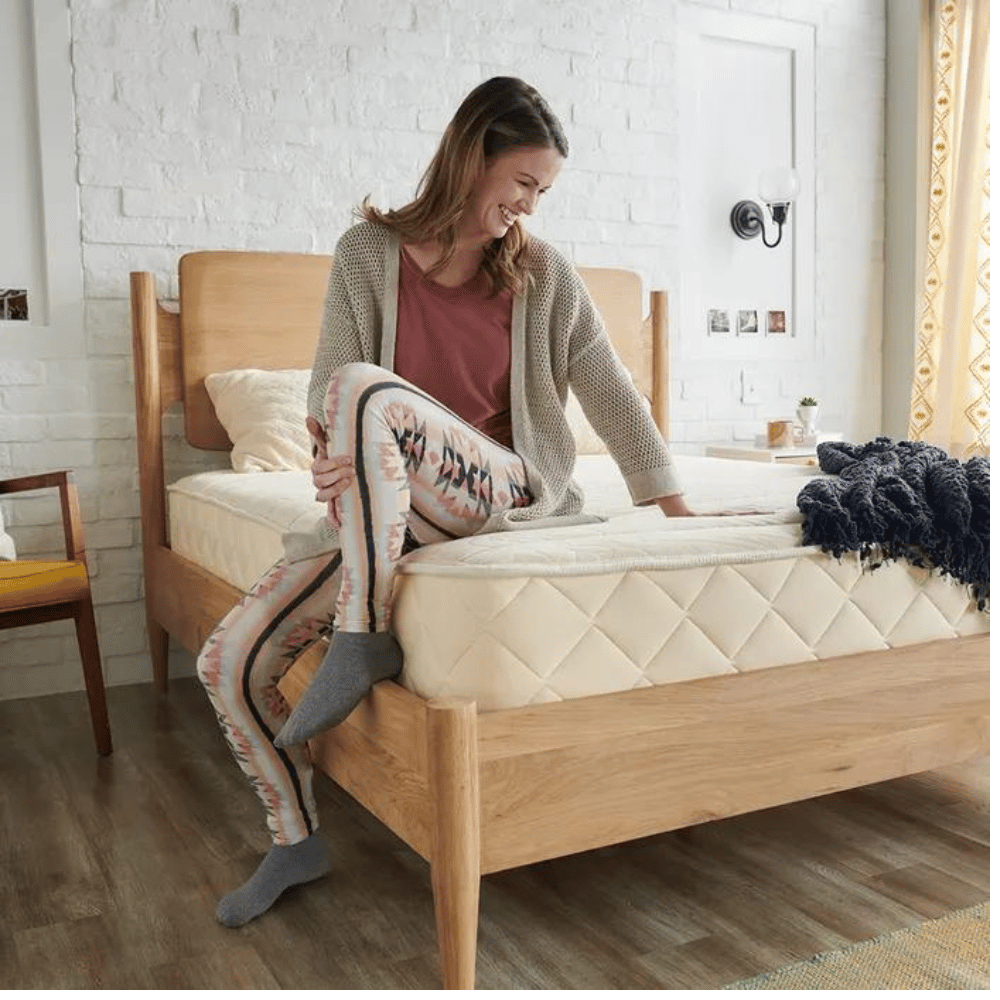
Naturepedic Serenade Organic Hybrid Mattress

Price Range: $1,399.00 - $2,799.00
Rating: 4.6/5.00
Best for Back and Side Sleepers
Side sleepers benefit from the gentle contouring of the latex layer, while back sleepers enjoy the supportive coil system for spinal alignment. Stomach sleepers might find it too soft, but it’s an excellent choice for those seeking a plush, supportive organic hybrid.
Specifications & Comfort Benefits
- Materials and Construction
- Made with GOLS-certified organic Dunlop latex for a naturally supportive and responsive feel.
- GOTS-certified organic cotton cover provides breathability and a soft, luxurious touch.
- Organic wool layer enhances temperature regulation and wicks away moisture.
- A pocketed coil system with zoned support ensures targeted relief and motion isolation.
- Firmness and Feel
- Available in two firmness options: Medium (5.5/10) and Firm (7.5/10) to suit different sleep preferences.
- Latex offers a buoyant and slightly bouncy feel, preventing excessive sinkage.
- Hybrid design balances plush comfort with strong support for spinal alignment.
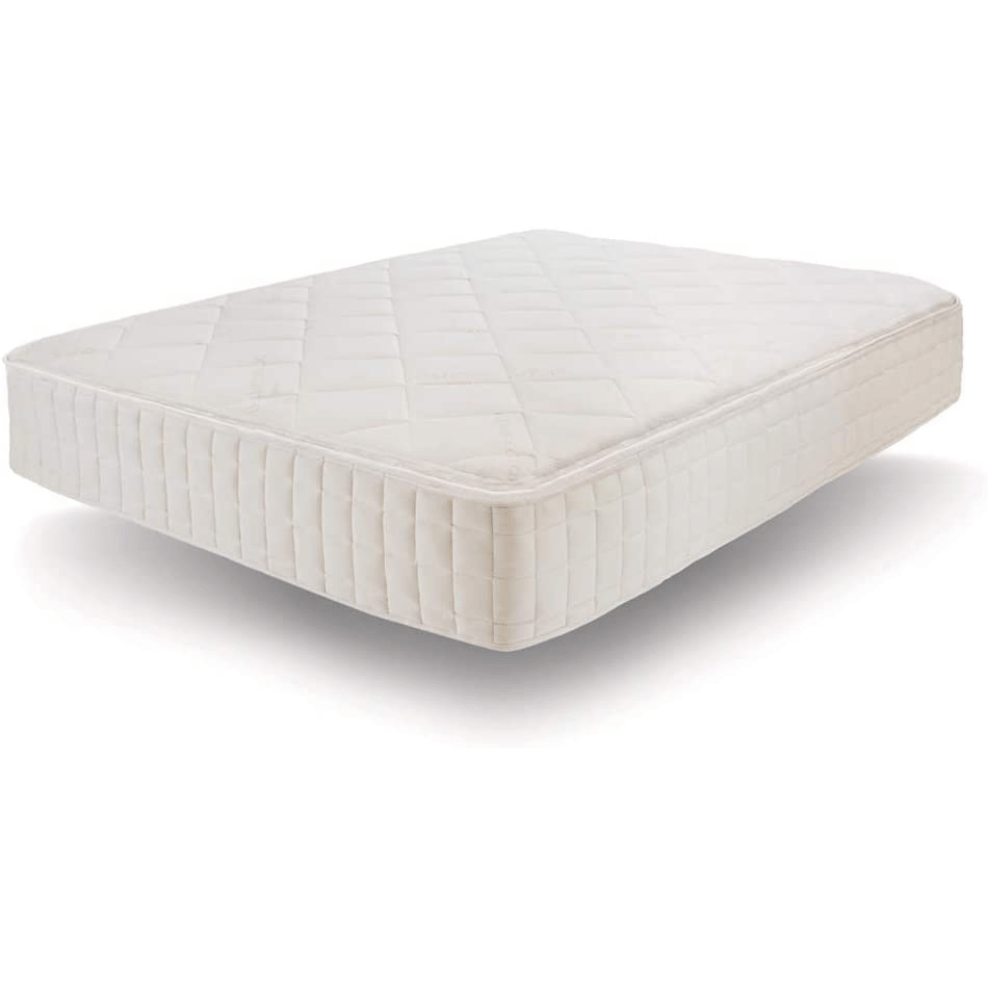
- Pressure Relief
- The zoned coil system provides targeted support to the lumbar region.
- Organic latex gently contours to relieve pressure in the shoulders and hips.
- Ideal for sleepers experiencing joint pain or discomfort.
- Temperature Regulation
- Organic wool and latex promote airflow and prevent overheating.
- The breathable cotton cover enhances cooling properties.
- The pocketed coil system allows additional ventilation, making it great for hot sleepers.
Pros and Cons
Pros
- Customizable Firmness Options: Available in both medium and firm comfort levels.
- Certified Organic Materials: Eco-friendly and free from synthetic chemicals.
- Excellent Pressure Relief and Support: Zoned coils and latex provide balanced comfort.
Con
- Higher Price Point: Premium organic materials are more expensive than conventional mattresses.

Mattress Breakdown: Performance, Support, and Cooling
- Edge Support
- Reinforced coil perimeter enhances stability and prevents sagging.
- Firm edges make sitting or getting in and out of bed easy.
- Maximizes the usable sleep surface for couples and solo sleepers.
- Motion IsolationCertifications and Eco-Friendliness
- Individually wrapped coils reduce motion transfer between partners.
- Latex absorbs movement, preventing disruptions from nighttime shifts.
- Great choice for couples and light sleepers.
- GOTS-certified organic cotton and wool ensure sustainable and ethical production.
- GOLS-certified organic latex guarantees non-toxic and environmentally friendly materials.
- GREENGUARD Gold certified for low emissions and improved indoor air quality.
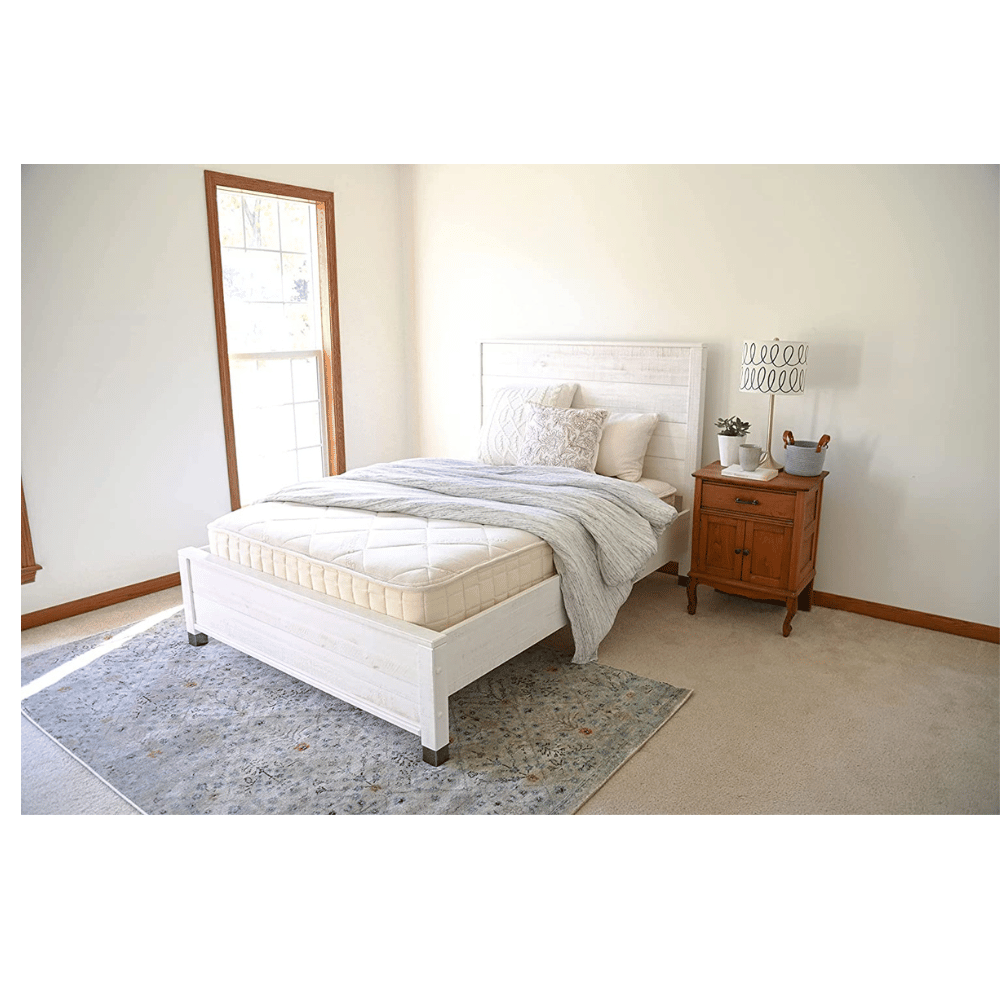
Shipping and Returns
Naturepedic provides free shipping within the contiguous U.S. and offers a hassle-free return process. Customers can return the high-quality mattress within the trial period for a full refund if unsatisfied.
Trial Period and Warranty
The Naturepedic Serenade Organic Hybrid Mattress includes a 100-night sleep trial and a 25-year limited warranty, reflecting the brand’s confidence in its durability and performance.
My Verdict
The Naturepedic Serenade Organic Hybrid Mattress is an excellent option for eco-conscious sleepers who want a mattress made from high-quality organic materials, superior comfort, and long-lasting durability.
While the price is higher, its customizable firmness levels, temperature regulation, and pressure-relieving design make it a great investment for restful and sustainable sleep.
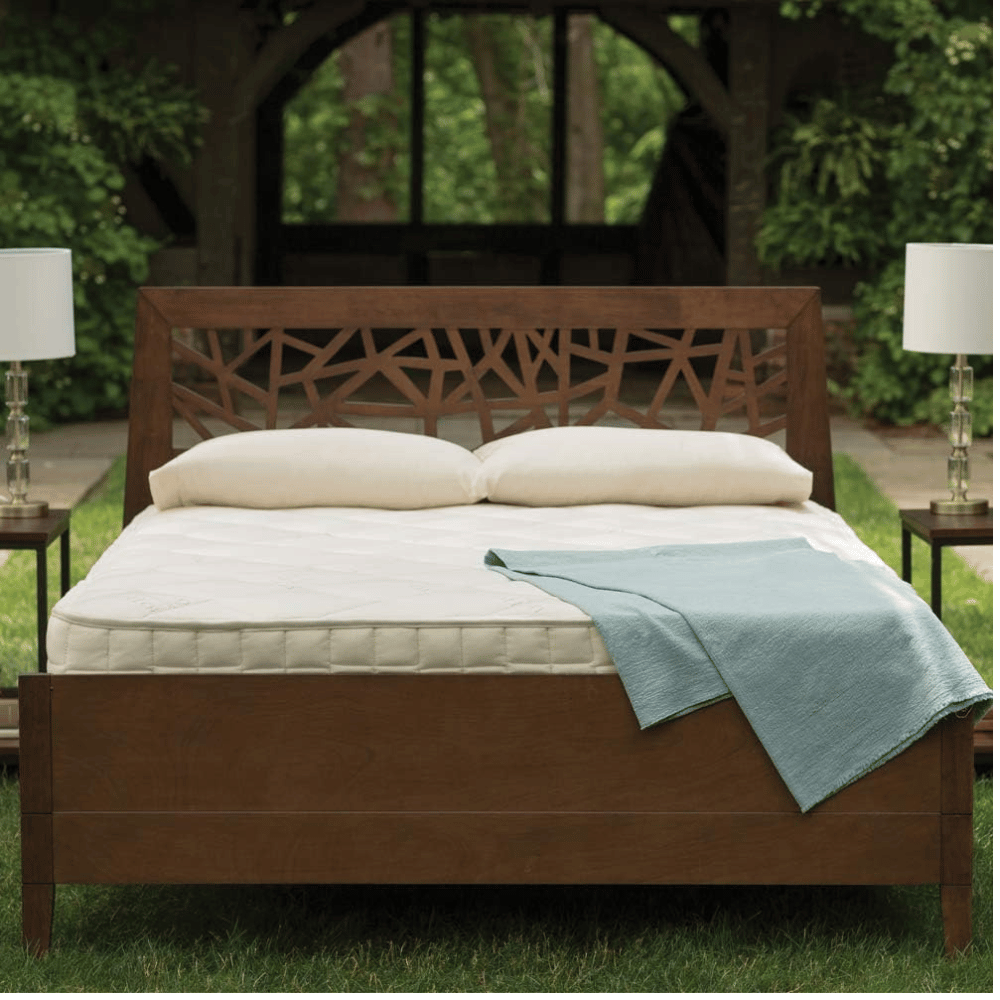
Latex Mattress Brands Comparison
Based on their construction and material composition, the latex mattresses Rcan be categorized into Natural Latex, Hybrid Latex, and Blended Latex. Below is a comparative analysis of their features, benefits, and durability:
1. Natural Latex Mattresses
Made entirely of natural latex (Dunlop or Talalay) without synthetic blends.
- The Saatva Zenhaven Mattress is a Natural Latex Mattress, crafted from 100% Talalay latex. It features a dual-sided design with different firmness levels, offering a fully latex, eco-friendly, and customizable sleep experience
- PlushBeds Botanical Bliss: This mattress offers customizable firmness with 100% natural Dunlop latex layers. It excels in pressure relief and is hypoallergenic, making it ideal for eco-conscious buyers.
- FloBeds Natural Latex vZone: Features zoned support with Talalay latex for spinal alignment. Known for durability (15–20+ years) and breathability, though heavy, lacking edge support.
- Latex for Less Full Natural Latex: Budget-friendly natural latex foam mattress with a split-firmness design. Resists dust mites and mold but has minimal motion isolation.
Shared Benefits:
- Exceptional durability (15–25 years) due to natural latex’s resilience.
- Hypoallergenic and antimicrobial, suitable for allergy sufferers.
- Eco-friendly with biodegradable materials.
Key Differences:
- PlushBeds uses Arpico latex for heavier sleepers, while FloBeds prioritizes zoned contouring for side sleepers.
2. Hybrid Latex Mattresses
Combine latex comfort layers with coil or foam support systems.
- Birch Luxe Natural: Integrates Talalay latex and organic wool for a medium-firm feel. Excellent for back/stomach sleepers with reinforced edge support.
- WinkBeds EcoCloud Hybrid: Uses Talalay latex and zoned coils for spinal alignment. Ideal for combination sleepers, but motion transfer is notable.
- Nolah Natural 11”: Features dual latex layers and cooling coils. Best for restless sleepers due to responsive bounce
- Avocado Green: This is Organic dunk latex with pocketed coils. It is praised for its lumbar support but is too firm for lightweight side sleepers.
- Happsy Organic: Affordable hybrid with GOLS-certified latex. Moderate edge support and cooling, though less durable than premium hybrids.
- Naturepedic Serenade: Combines organic latex with micro-coils. Offers targeted pressure relief but heavy and pricey.
Shared Benefits:
- Enhanced edge support and airflow from coil systems.
- Balanced firmness (6–7/10) suitable for most sleep positions.
Key Differences:
- Avocado Green and Birch Luxe emphasize organic certifications, while Nolah focuses on motion isolation.
3. Blended Latex Mattresses
Mix natural and synthetic latex for affordability.
- Brooklyn Bedding Ecosleep Luxe: Blends Dunlop latex with recycled foams. Mid-range price with moderate durability (8–10 years). Lacks the breathability of pure latex.
Shared Benefits:
- Cost-effective alternative to 100% natural latex.
- Suitable for budget shoppers prioritizing partial eco-friendliness.
Limitations:
- Less durable and eco-friendly than natural or hybrid options.
Comparative Summary
Category | Key Features | Durability | Best For |
|---|---|---|---|
Natural Latex | 100% organic, hypoallergenic | 15–25+ years | Eco-conscious buyers, allergy sufferers |
Hybrid Latex | Coil support, cooling | 10–15 years | Back/stomach sleepers, hot sleepers |
Blended Latex | Affordable, mixed materials | 8–10 years | Budget shoppers, casual users |
Overlaps:
- Hybrid models like Avocado Green and Birch Luxe share organic certifications but differ in firmness and edge support.
- PlushBeds (natural) and Nolah (hybrid) emphasize pressure relief but cater to distinct sleep styles.
Maintenance Tips
- To extend the lifespan of your latex mattress, follow these essential care tips:
- Cleaning: Spot clean with a mild detergent and lukewarm water. Avoid harsh chemicals, bleach, or soaking the mattress.
- Rotation: Rotate the mattress every 3–6 months to distribute wear evenly and prevent sagging.
- Protection: Use a breathable, waterproof mattress protector against spills, dust, and allergens.
- Ventilation: Keep the mattress in a well-ventilated space to prevent moisture buildup and maintain freshness.
- Foundation: Use a supportive base to preserve structural integrity and comfort.
Conclusion:
Latex mattresses offer a winning combination of comfort, durability, and eco-friendliness, making them a great investment for quality sleep.
The best latex mattresses cater to all sleep styles, whether you need pressure relief, cooling properties, or long-lasting support.
Choosing a high-quality latex bed means prioritizing sleep health and sustainability. Are you ready to experience natural comfort and lasting support?
Explore the best latex mattress options and find the perfect fit for a rejuvenating, restful night’s sleep.
FAQs
What are the disadvantages of a latex mattress?
Due to their high-quality, natural materials, latex mattresses are more expensive than traditional foam or innerspring models. They are also heavier, making them harder to move. Some sleepers may find them too firm, while individuals with latex allergies should use a protective cover or consider alternatives.
Are latex mattresses any good?
Yes, latex mattresses are highly regarded for durability, comfort, and sustainability. They provide excellent support, pressure relief, and breathability, making them ideal for various sleep positions. Additionally, they resist allergens and dust mites, ensuring a healthier sleep environment.
What is the point of a latex mattress?
A latex mattress offers a natural, supportive sleep surface with superior durability and breathability. It adapts to the body for pressure relief while maintaining a responsive feel. Unlike synthetic foams, latex is eco-friendly, free from harmful chemicals, and naturally hypoallergenic, promoting a cleaner, healthier sleep environment.
Which is better, a latex or a memory foam mattress?
Latex provides a responsive, breathable sleep surface, while memory foam offers deep contouring. Latex is more durable and cooling, making it ideal for hot sleepers. Memory foam excels at pressure relief but retains heat. The best choice depends on whether you prefer bounce, cooling, contouring, and softness.
